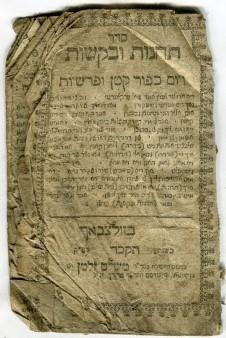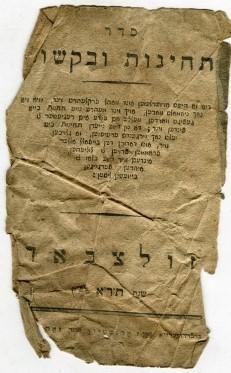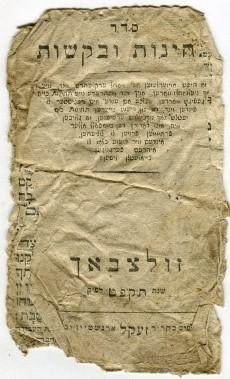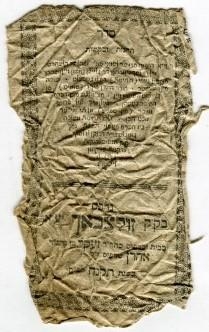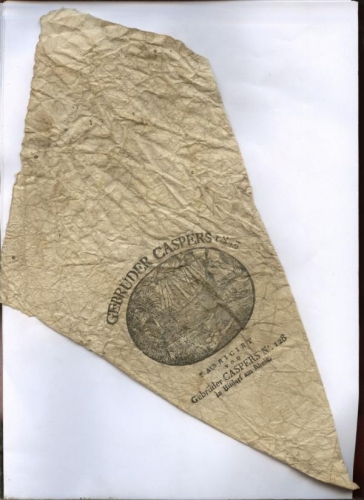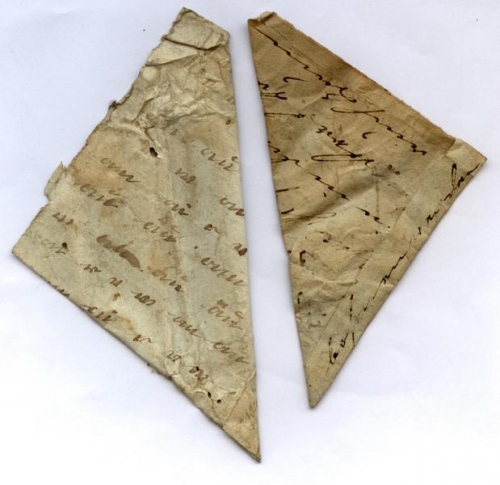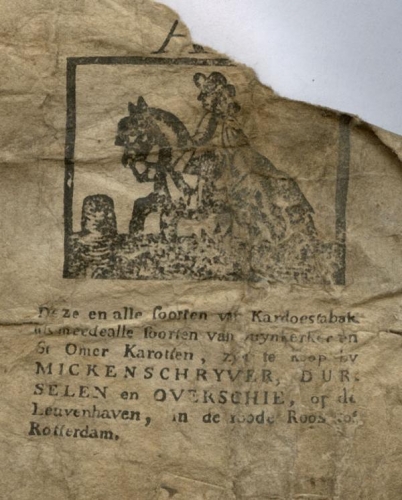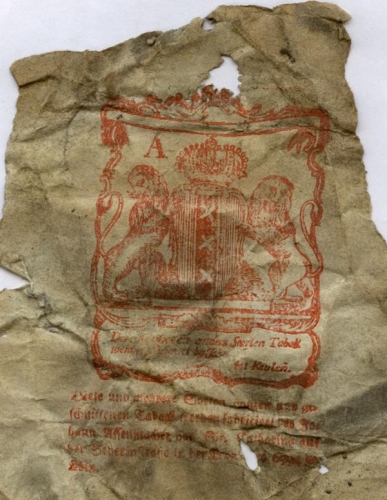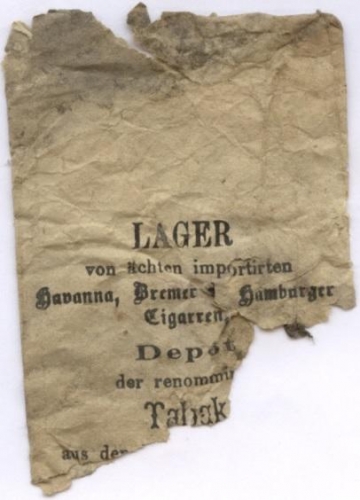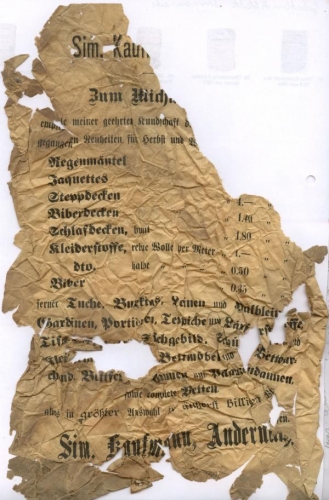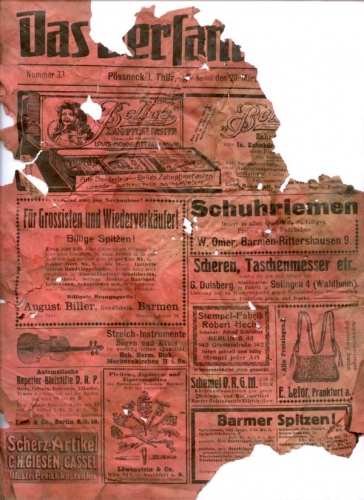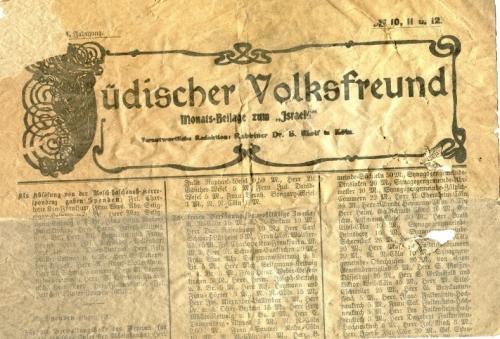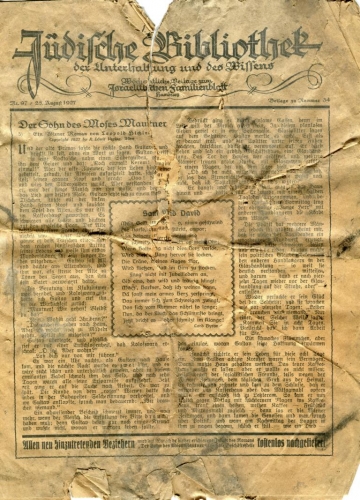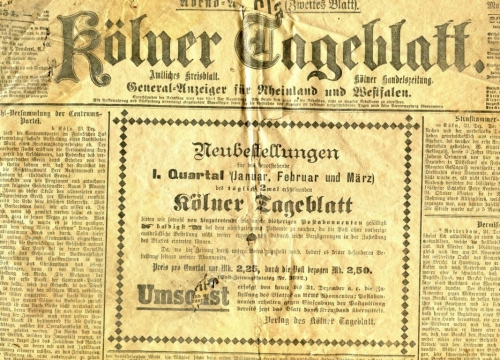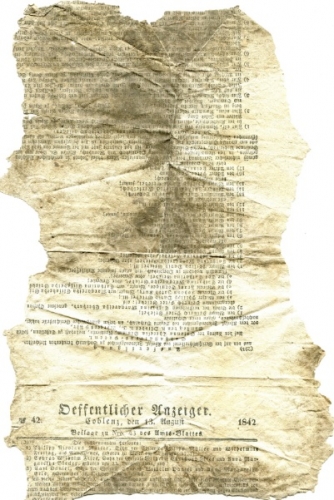Genizah Finds
Edited by:
Prof. Dr. Andreas Lehnardt
Johannes Gutenberg-Universität
Fachbereich 01
Evangelisch-Theologische Fakultät
55099 Mainz
phone: 06131 39-20312
E-mail: andreas.lehnardt@uni-mainz.de
www.blogs.uni-mainz.de/fb01genizatniederzissen/
Further Genizoth:
Genizah Alsenz
Genizah Bruttig
Genizah Hüttenheim
Genizah Weisenau
Official Documents
Bible
Those bible texts considered normative in Judaism are called Tanakh – the Hebrew Bible. The Tanakh consists of three parts, Torah (“teaching”), Nevi’im (“Prophets”) and Ketuvim (“writings”). The acronym of the initial letters of these parts is “TNKh”. In total, the Tanach consists of 24 books. It originated as a collection of various religious and profane Jewish texts gathered via a complex process of canonization. Its oldest parts were passed down as oral traditions, consisting of legends, etiologies and the origin myths of individual clans and tribes. Over time, they merged, were later recorded and eventually integrated into a more stringently conceptualize religious salvation story.
Bible Commentary
Bible commentaries encompass a range of annotations and historical explanations for individual books of the Bible, or for specific translation of the Bible. Next to the text of the Bible, they often contain cross-references to other Bible passages, as well as textual interpretation of based on traditions of exegesis. Besides their theological functions, Bible commentaries can serve as a basis for individual Bible study, or as an introduction into the various books of scripture. They range from modest paperbacks to volume-spanning editions.
Book Cover Fragments
Even though in most cases they cannot be matched to individual titles, recovered fragments of book covers allow fascinating insights into the handling of (mostly religious) literature. The inner faces of many covers contain drawings, names of former owners or simply doodles, giving a hint of possibly rather uninspiring visits to the synagogue. Some remnants of Christian books can also be found among the fragments.
Bundles
Loose pages of prayer books or bibles as well as other texts, either religious or profane, were collected and bundled together before being put in the Genizah. In the Niederzissen Genizah, about 24 such more or less intact bundles were recovered. Next to pages of text, sometimes prayer straps and prayer capsules were part of these bundles as well. These bundles convey a poignant insight into the process of careful handling and storage of texts within a Genizah.
Marriage Contracts (Ketubot)
In orthodox Judaism, the wedding contract (Ketubah), written in Aramaic, defines the obligations of a husbands towards his wife. With the contract, he commits to providing her with support, sustenance, a healthy life, and happiness. Strictly speaking, the Ketubah contains three rights of the wife to which the husband commits: 1. Sustenance (She’era), 2. Clothing (Kesutah), 3. Sexual Intercourse (Onta). The Ketubah also regulates the financial protection of the wife in case of divorce or the husband’s death.
Fiction
Next to religious literature, the Genizah also contains a number of titles, mostly in Yiddish, which can be broadly classified as fiction. After the introduction of printing, the reading of such profane literature became more common. Amongst those pages identified, many edifying works can be found, such as the famous Ma’ase-book, which, despite their unconventional style, ultimately aimed at conveying religious contents.
Notes of Health and Notes of Origin
Hagaddah
The Haggadah is the story and the liturgic instruction (including songs) for the first night of Passover, the Passover Seder. The Haggadah for Passover is a – sometimes illustrated – booklet from which the entire family reads and sings during the feast. It is written both in Aramaic and Hebrew (today usually translated and explained into the local language) and describes the events told in Book of Exodus: The exile in Egypt and the exodus to freedom. In addition, it contains traditional rabbinic embellishments, interpretations of the story as well as the Hallel.
Halakah
Halakah is the body set norms, rules, and statutes of the (originally oral, later-on written) Jewish tradition. Halakah regulates Jewish life in all its aspects. Because of this, the interpretation of the texts in combination with oral traditions has created a number of interpretative and commentary works. Via a unifying process, law codices and Halakah-collections emerged, which are being updated until today.
Yiddish
Yiddish is a thousand-year-old language spoken (and written) by Ashkenazi Jews in large parts of Europe and kept alive by some of their descendants even today. The general consensus is that it is a west-Germanic language which emerged from Middle High German and incorporates linguistic elements from Hebrew, Aramaic, Romanic, Slavic and other languages. It is written using Hebrew letters and is, next to Hebrew and Aramaic, one of the main languages of Judaism. It is commonly divided in Western and Eastern Yiddish. During the middle ages, Jewish migration (caused by Christian persecution) from German-speaking territories to other parts of Europe helped the spread of Yiddish language, especially eastwards, where Eastern Yiddish developed. Up until the early 20thcentury, Yiddish was still commonly used in Germany – many Yiddish-language prints from the Genizah attest to this practice.
Calendar
The Jewish Calendar is a lunisolar calendar – specifically, months follow the passage of the moon, while the year follows the sun. As in entirely lunar calendars, the months are aligned with the lunar phases. In addition to regular years, which contain twelve such lunar months (regularly 354 days), leap years exist which contain 13 lunar months (regularly 384 days) to re-align the months with the solar year. On seven occasions over a cycle of nineteen years (every 3rd, 6th, 8th, 11th, 14th, 17th, and 19thyear) a second month of Adar (Adar Sheni / Adar Bet) is added, meaning a leap year can have either 383, 384 or 385 days. These exceptions of the calendar can thereby lead to a lengthening or shortening of each year by one day, respectively. Today, the Jewish year starts in the fall with the month of Tishrei, which, according to Jewish belief, is the month during which mankind was created. In biblical times, the year instead began with the month of Nisan during the springtime. Nisan is the month of deliverance, in which the Jewish ancestors left Egypt. The significance of this deliverance can still be seen in the fact that, in religious use, Nisan is still considered more important and is counted as the first month of the year, with Tishrei being the seventh. The names of the Jewish months are Akkadian and stem from the time of Babylonian exile.
Childbed Notes
Childbed notes were placed above the bed of the infant to protect from sudden infant death syndrome. This “crib death” was commonly explained by Lilith appearing in the nursery, to take the children with her. In Jewish tradition, Lilith is known as the first wife of Adam, who, after refusing to be subservient to Adam, was banished from paradise. To exact vengeance, until this day she haunts newborns.
Teaching Sheets and Wall Sheets
It is customary to print important prayers or blessings on one-sided sheets and hang them in the Synagogue or private rooms for a variety of reasons. One widespread custom is the use of a Mizrah to mark the direction of Jerusalem to direct prayers. The walls of Sukkah (huts for Sukkot) are also commonly decorated with blessings. Occasionally, single prayers or psalms were also placed above the bed of children or during illness.
Machzor
Machzor is the Hebrew word for “cycle”, particularly the cycle of Jewish holidays. More specifically, the Machzor is a prayerbook containing prayers and bible passages to be recited during the holidays (compared to the Siddur, which contains prayers for weekdays and the Sabbath)

Maḥzor ke-Minhag Q‘‘Q Ashkenazim yishmoram ha-El. Heleq sheni, … nidpas pa’am shishit, Sulzbach: Ahron ben Uri Lipman Fränkel 1719

Tefillat Yom Kippur qatan, Sulzbach: Aharon u-veno Zekel 1789 (Nizi_Gefra_3) (from the property of E. Bonn, Hilfrath bei Hückelhoven)
Minhagim
Minhag means custom or tradition – but within this meaning exist various nuances: On one hand it can mean customs which are commonly practiced and have thereby become binding Halakah. On the other, it also includes locally limited customs, which are only applicable in a given country or even a specific community. The Talmud and various law texts extensively deal with the question of whether such local Minaghim are also applicable to Jews originating from a different locality. Finally, the word “Minhag” can also describe liturgical rites which have developed in specific regions, i.e.: Ashkenazi Minhag, Sephardic Minhag, Polish Minhag.
Mohel Book
A Mohel book is maintained by the man performing circumcisions (a Mohel), to record all the circumcision (Brit Mila). In times before civil registries, Jews had to record their births, marriages, and deaths in Christian parish records – for a fee. Since such parish records are often incomplete, the Mohel books are important sources for dates and names otherwise lost.
Musar
Musar literature is genre of didactic ethical literature, developed over the course of many centuries. Its initial purpose was to convey moral and spiritual values (Musar) to a broad range of readers, and it gradually incorporated a variety of philosophic and cabbalistic ideas. In modern times, based on a broad medieval tradition, a number of works were written (both in Hebrew and Yiddish) popularizing the classical texts, blurring the lines between Musar literature, Minhag literature and legal codices.
Sefer ha-Hayyim
The Sefer ha-Hayyim is a book written by Simon Frankfurt ben Israel Jehuda, who lived in Amsterdam until his death in 1712. The book, written in equal parts Hebrew and Yiddish, was first published posthumously in 1714. It contains prayers and instructions for visiting the sick, the dying and on conduct or after bereavement.
Siddur
Siddur is the common name of the Jewish prayer book containing prayers for daily use and for use during Sabbath. Ashkenazi and Sephardic siddurim are different, even if only slightly, and further distinctions can be made for various local rites and denominations. Siddur means “order”, indicating the order and sequence of the prayers within. A siddur contains prayers for daily life and Sabbath, specifically the morning prayer (Shacharit), afternoon prayer (Mincha) and the evening prayer (Ma’ariv) as well as the Mussaf prayer recited only on Sabbath and some holidays. Additionally, the siddur also contains blessings which can be recited in the synagogue or at home, prayers for special occasions, and the most important prayers for high holidays. These prayers are printed in the traditional Hebrew text with vocalizations, and often accompanied by translations to the local language. In Reform Judaism, depending on the specific denomination, fewer or more prayers are printed only in the local language.

Siddur Sefate Rennanot be-leshon ivrit we-ashkenazit, (Rödelheim) Fürth: Zürndorffer & Sommer, 2. verb. Auflage 1748. (Nizi_Gefra_39)

Siddur be-lekhtekha ba-derekh, Prayer Book for Travelers, Hannover: C. A. Telgener 1840. (Nizi_Gefra_59)

Siddur Tefilla mesudar be-shlemut ha-siddur u-meduyaq be-takhlit ha-diyuq, Sulzbach: Zekel Arnstein u-veno 1830 (Nizi_ Gefra2_81)

Tefilla yeshara ke-minhag Ashkenaz u-Folin, Offenbach: Zvi Hirsch u-veno Acraham Spitz 1807 (Nizi_Gefra2_87)

Seder Tefilla yeshara ke-Minhag Ashkenaz u-Folin, Offenbach: Zvi Hirsh u-veno Avraham Spitz 1801 (copied front cover) including a handwritten mark of ownership by Isaac Berger on the inner face (Nizi_Gefra_1)

Sefer Tefilla ´al pi huqqe sha’are Tefilla mesudar be-shlemut ha-Siddur ha-meduyaq be-takhlit ha-diyyuq me’et ish navon we-hakham mi-hokhme zemanenu, sixth edition, Brilon: M. Friedländer 1861 (Nizi_Gefrag_16)

Tefilla mesudara mehudara u-me’utara, Fürth: Itzik ben Dawid Zirndorf 1804 (Gefrag_25) (Vinograd # 735)
![Siddur Tefillot Yisra’el. „Gebetbuch der Israeliten. Übersetzt von J. Bleichrode vermehrt durch die Gebete für den Rüsttag des Neumond (Jom Kippur Koton), Deutsche Gebete u.v.a.,“ [Prayer Book for the Israelites. Translated by J. Bleichrode, supplemented with prayers for the preparation day of the new moon (Yom Kippur Koton), German prayers and many more] Rödelheim: J. Lehrberger & Comp. 1906 (Nizi_Gefra_33)](https://www.ehem-synagoge-niederzissen.com/wp-content/uploads/2019/05/K800_Gefra_33-500x99999.jpg)
Siddur Tefillot Yisra’el. „Gebetbuch der Israeliten. Übersetzt von J. Bleichrode vermehrt durch die Gebete für den Rüsttag des Neumond (Jom Kippur Koton), Deutsche Gebete u.v.a.,“ [Prayer Book for the Israelites. Translated by J. Bleichrode, supplemented with prayers for the preparation day of the new moon (Yom Kippur Koton), German prayers and many more] Rödelheim: J. Lehrberger & Comp. 1906 (Nizi_Gefra_33)
Talmud
The Talmud, literally meaning „learning” or “studies”, is a collection of teachings which had been passed down orally. The basis of the Talmud is the Mishnah, which is commented on and complemented by the Gemara (literally: “completion”). Two main versions of the Talmud exist: the Babylonian (Bavli) and the Jerausalem (or Palestinian) Talmud. A classic print of the Talmud (including commentary) was published in Vilna from 1880 to 1886; it was based on a first print in Venice 1520-1523. A number of smaller prints was published in later years, often containing only individual treatises.
Talmud Commentary
The Babylonian Talmud is eventually supplemented with commentary from the Middle Ages. In classic print editions, many such medieval commentaries can be found. Seminal among them is the commentary written by Rashi (Rabbi Shlomo Yitzchaki) in the 11thcentury in France (Troyes) and Germany (mainly Mainz and Worms). It is amended by further additions from his grandsons and students, the so-called Tosafot. This continuous development of tradition and its history of exegesis via discussion, commentary and analysis shape the consistently dialectical style of the Talmud. The preferred form of presentation is the dialogue between various Rabbinic scholars, which results in a binding decision reflecting the determinant current state of tradition.
Tehinnot
From the 17th century onward, collections with prayers of repentance for special occasions and memorial days spread among Ashkenazi Judaism, collectively known as Seder Tehinnot (“order of laments / pleas”). Some of these collections were even written by women. Over time, extensive collections of sometimes freely formulated prayers were created, and added to various editions of Siddurim or Machzorim. Because of this, many of the pages found in the Genizah which contain Tehinnot cannot be matched exactly and are only approximately dated.
Advertisements and Wrappings


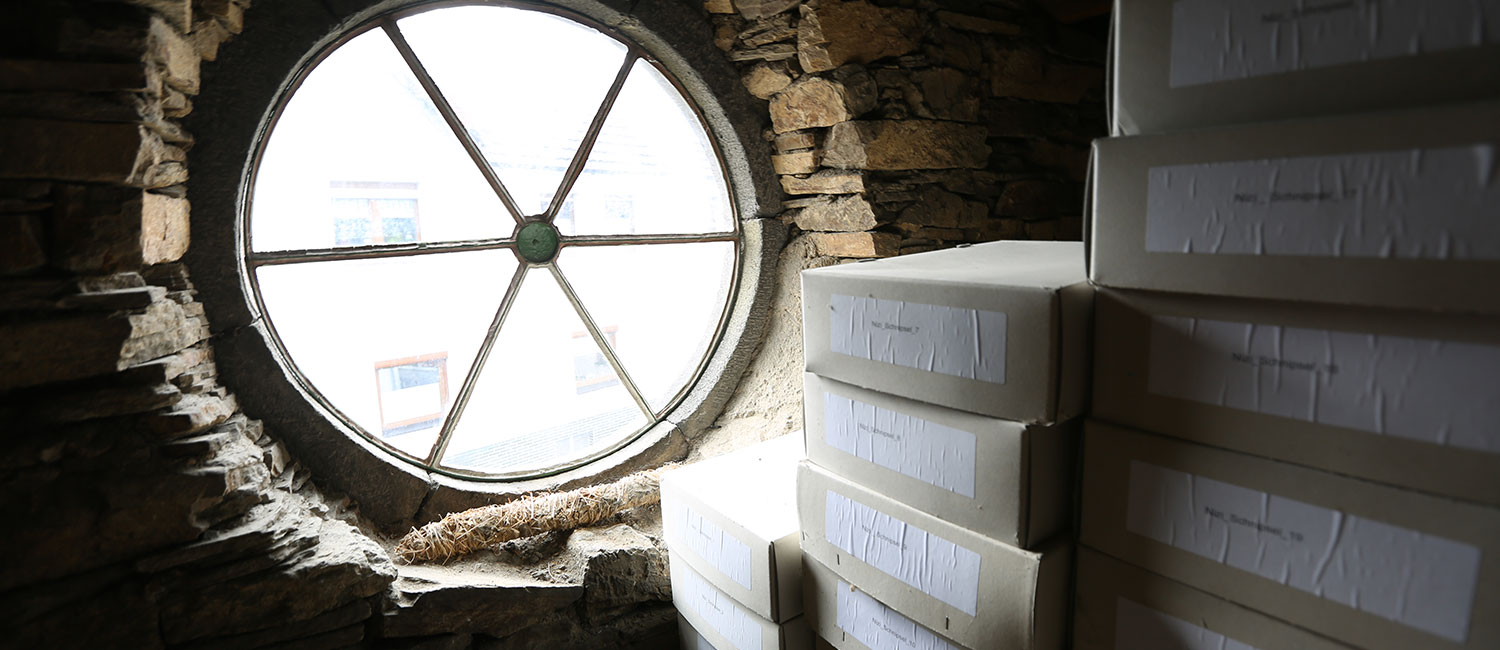
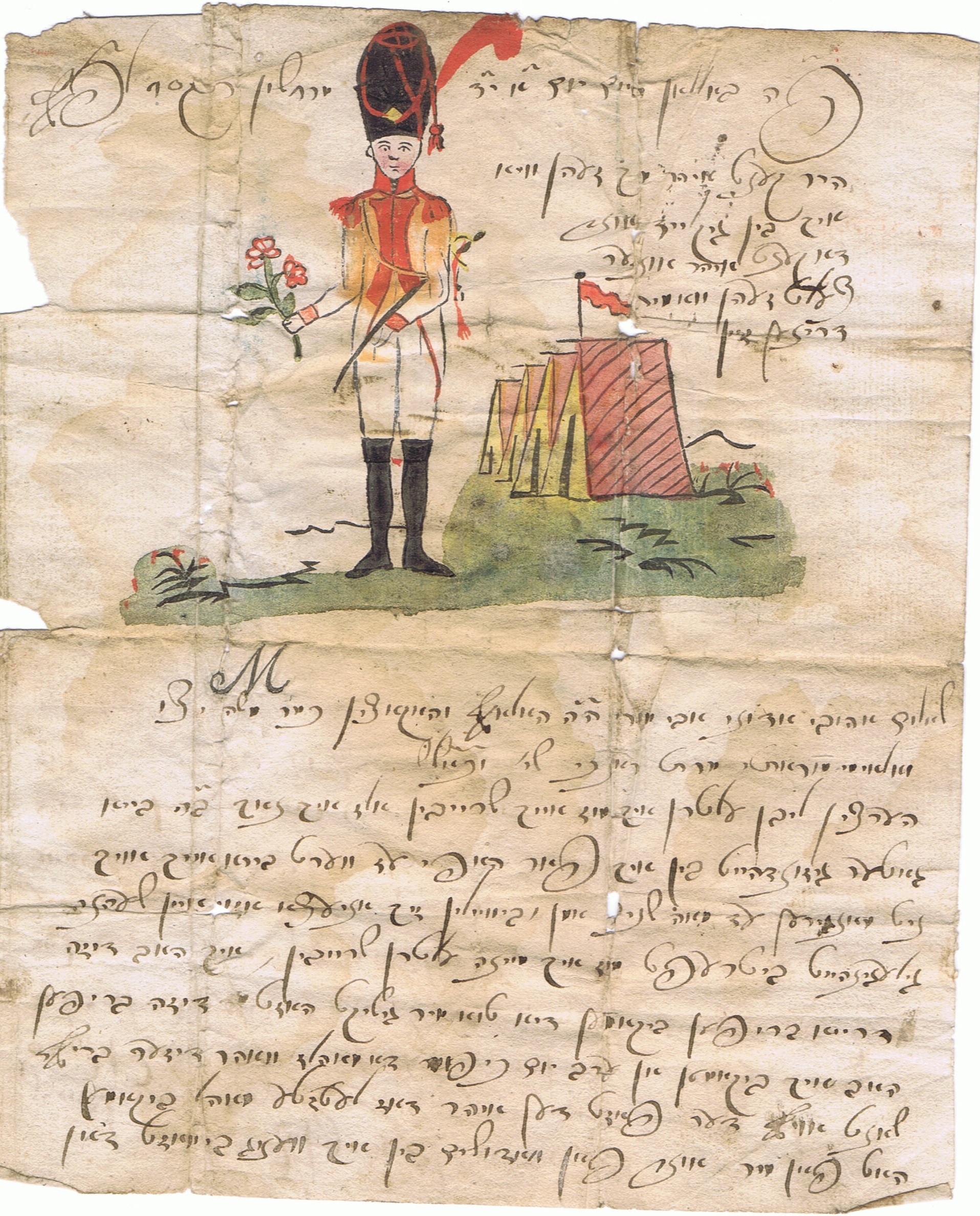
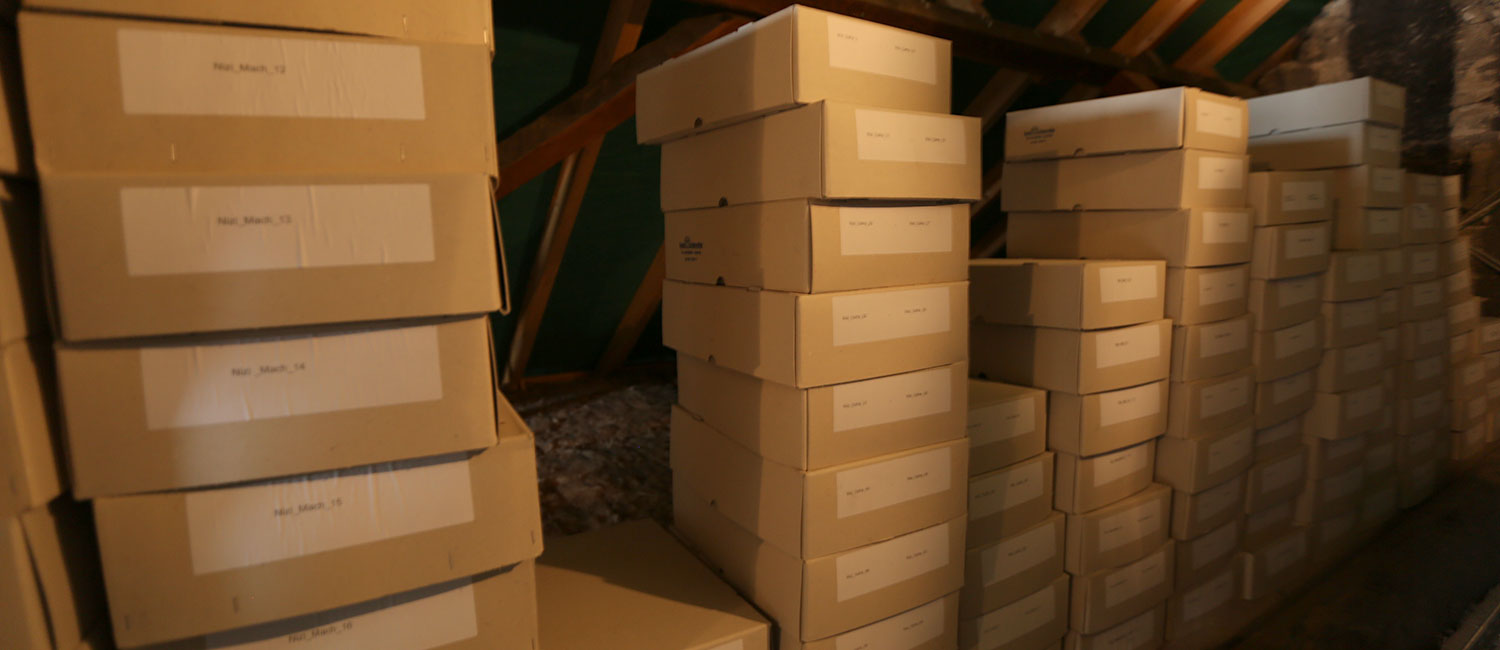
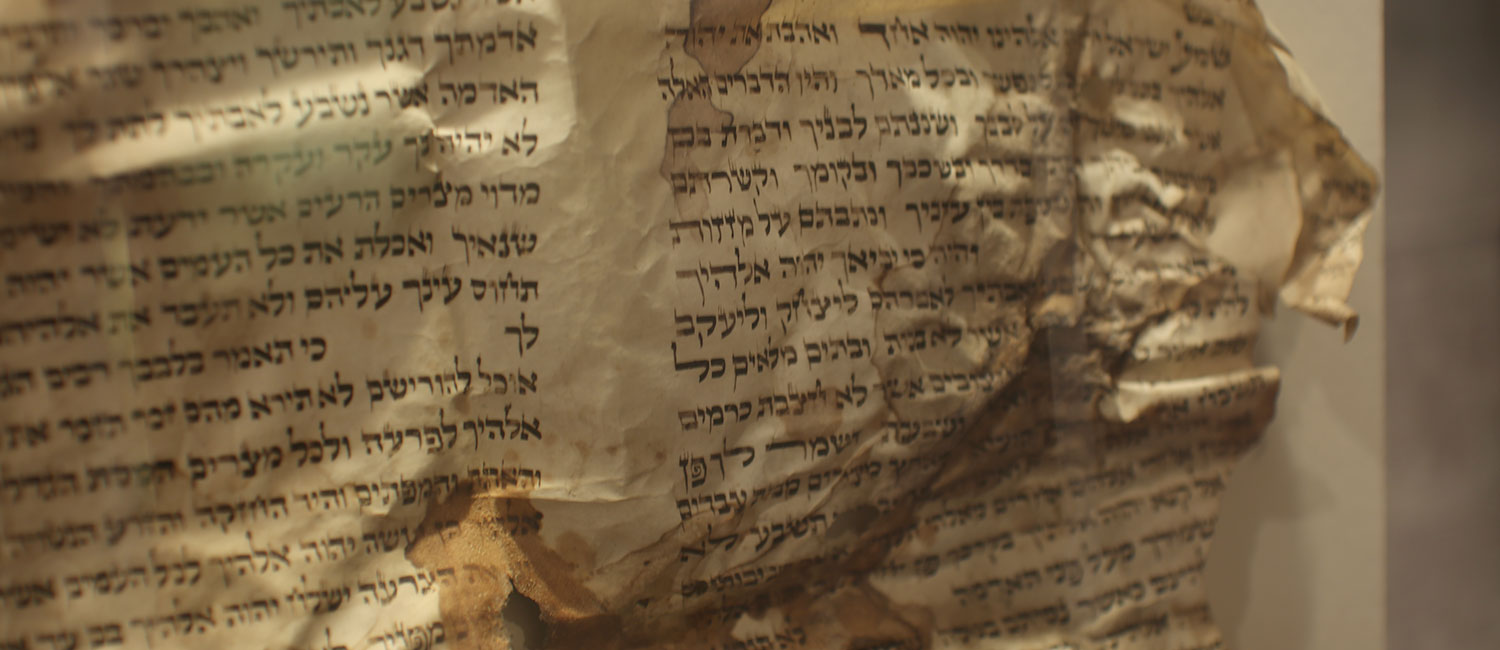

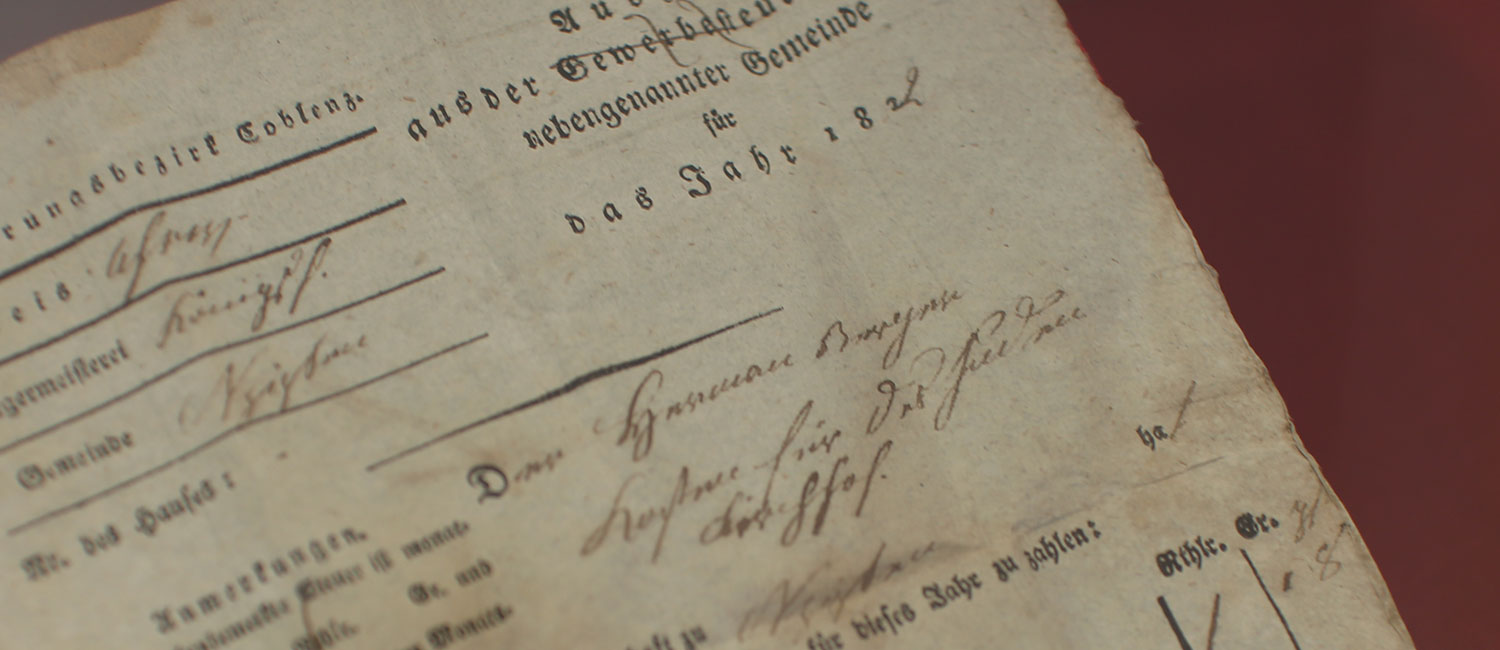
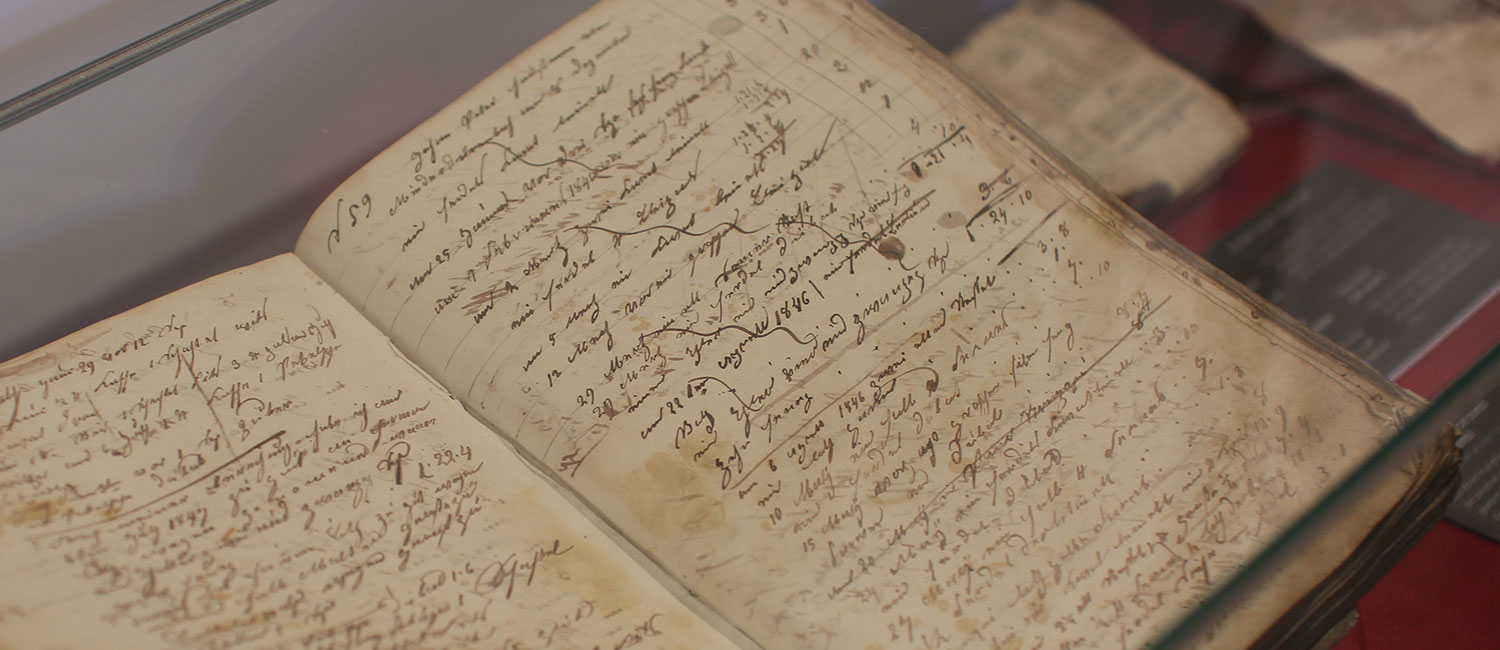
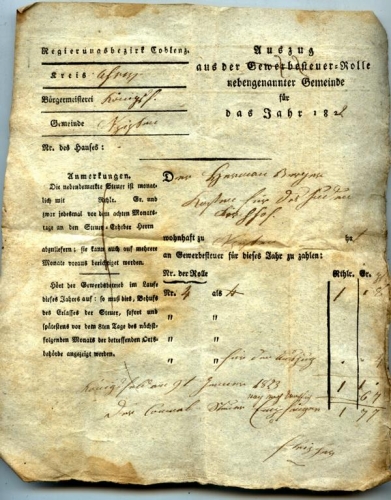
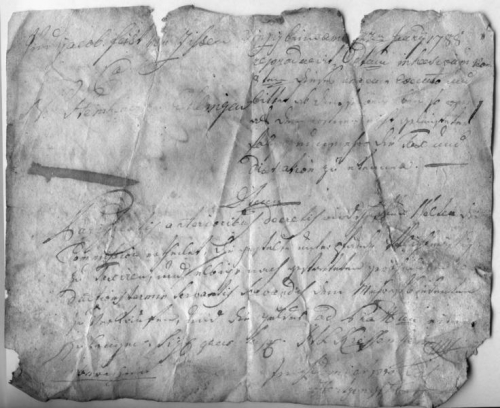
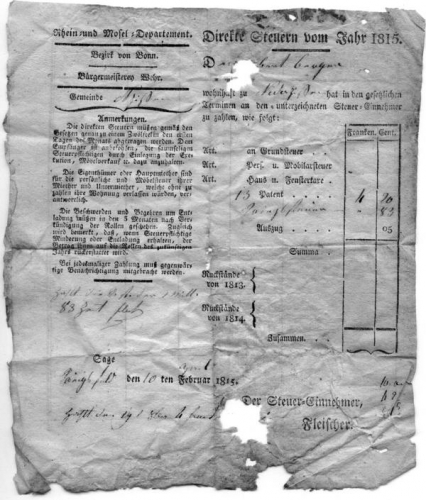
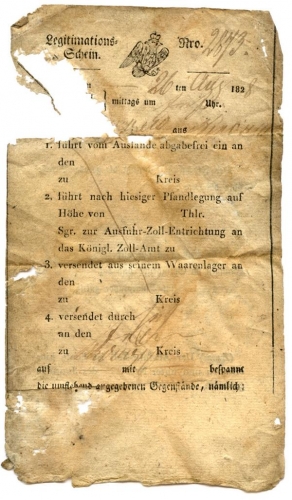
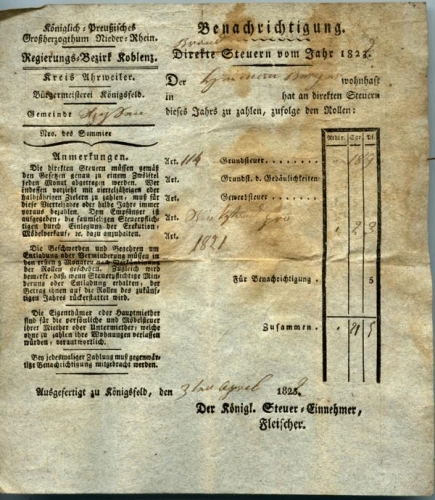
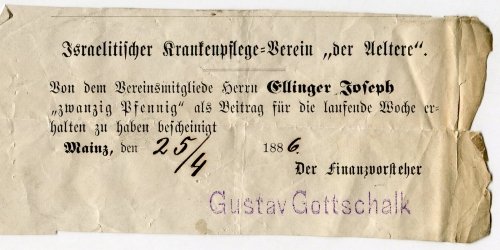
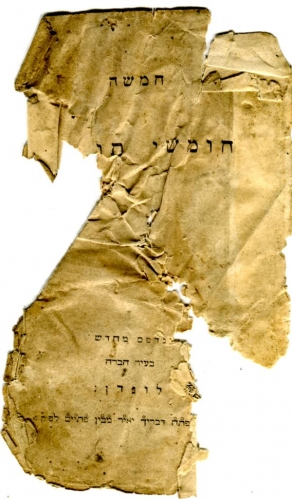
![Hamisha humshe Tora [o.O., o.J.]](https://www.ehem-synagoge-niederzissen.com/wp-content/uploads/2019/05/K800_Bib_22-99999x500.jpg)
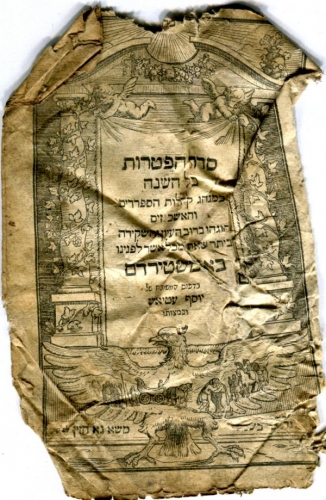
![Hamesh Megillot, re'u ze davar hadash asher kevar lo haya, Amsterdam [1859]](https://www.ehem-synagoge-niederzissen.com/wp-content/uploads/2019/05/K800_bibjid_1-99999x500.jpg)
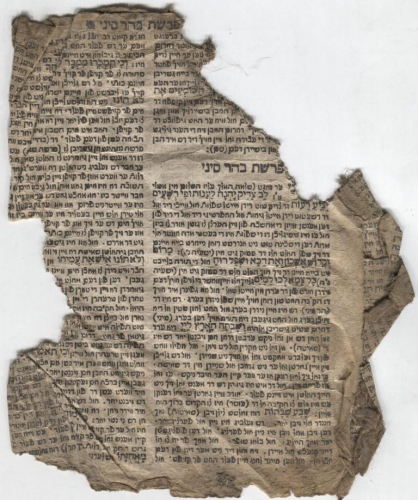
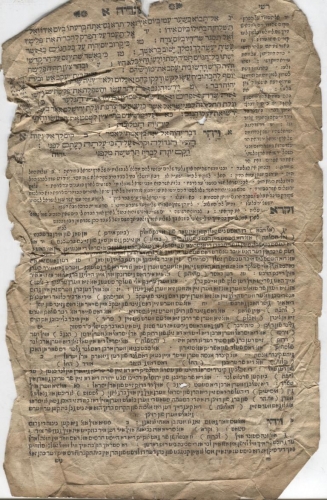
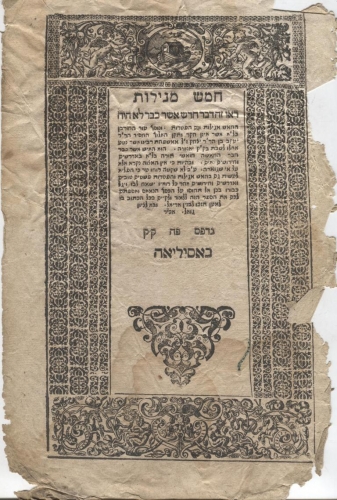
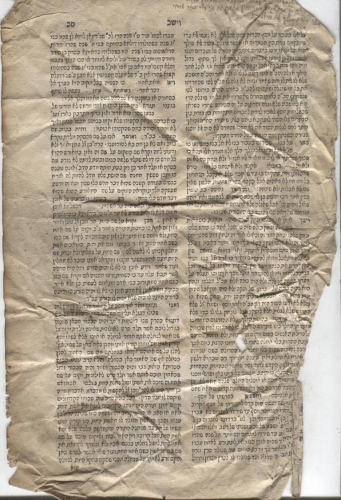
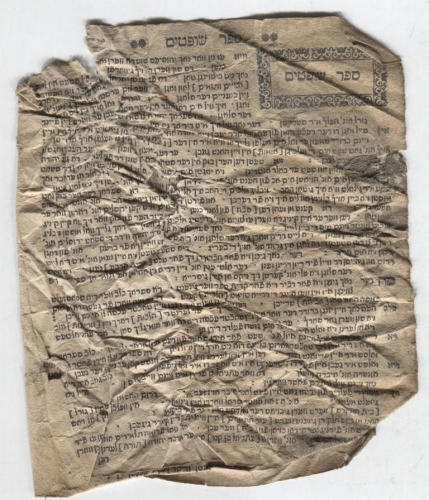
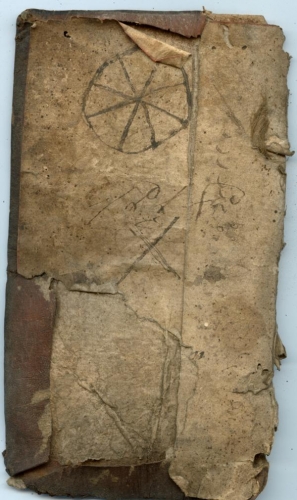
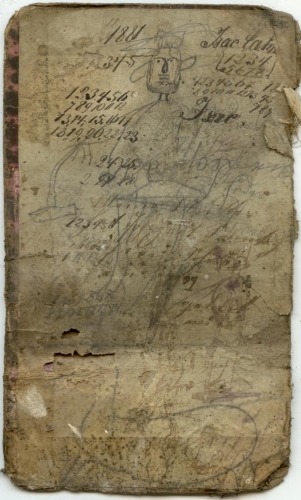
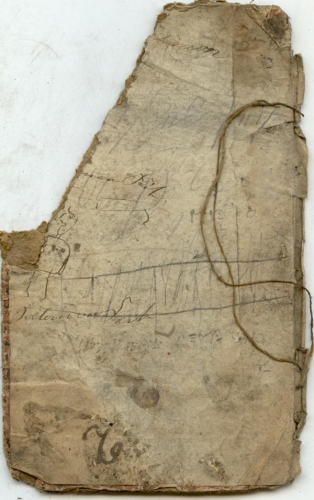
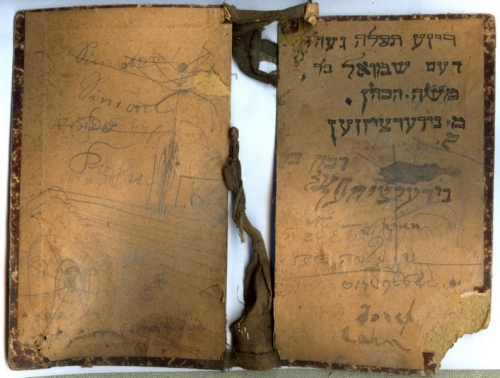
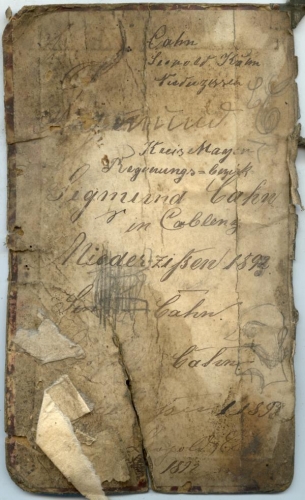
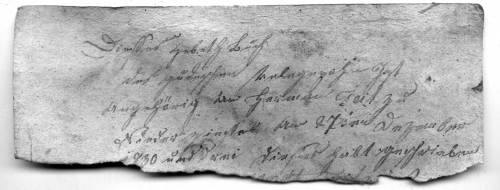
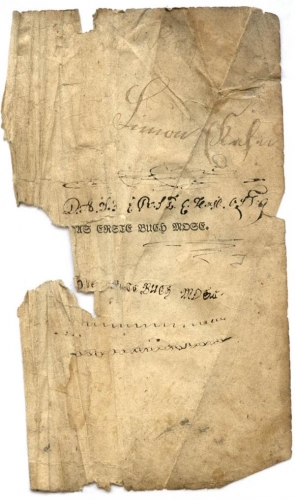
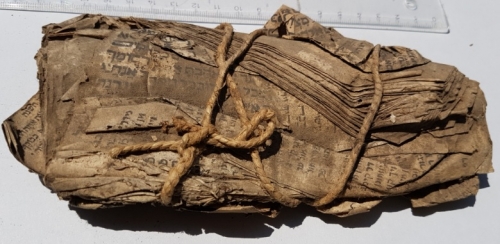
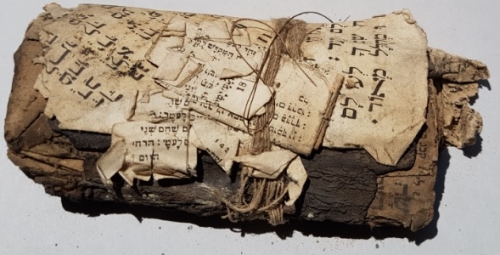
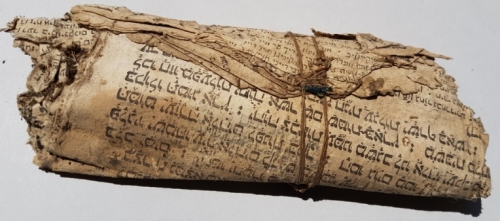
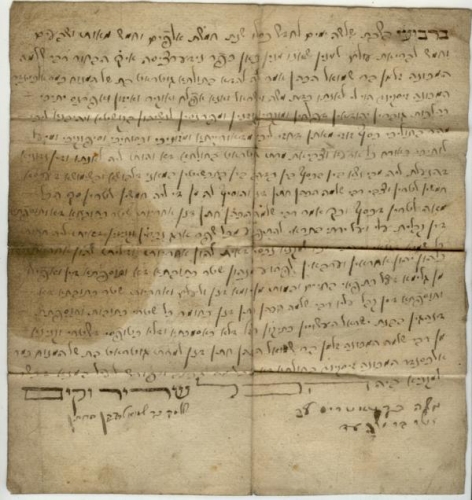
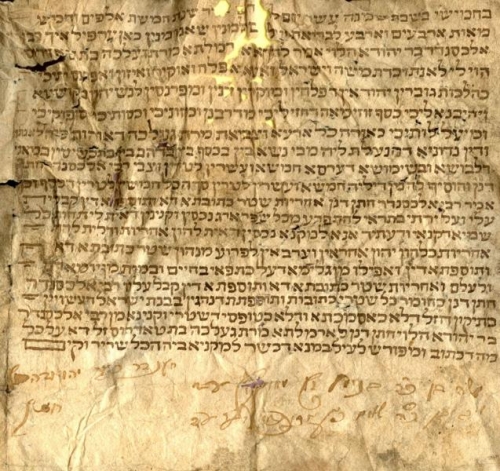
![Eliezer ben Eliyahu Ashkenazi (ha-Rofe), Sefer Ma'ase Shem, [Frankfurt/Oder 1724] (Nizi_Erzähllit_1)](https://www.ehem-synagoge-niederzissen.com/wp-content/uploads/2019/05/Erzhllit_01-99999x500.jpg)
![Qalonymos ben Qalonymos, Iggeret Ba'ale Ḥayyim, [Fürth: Itziq ben Leib Bukhbinder 1783] (Nizi_Erzähllit_2) (Vinograd, # 562)](https://www.ehem-synagoge-niederzissen.com/wp-content/uploads/2019/05/Erzhllit_02-99999x500.jpg)
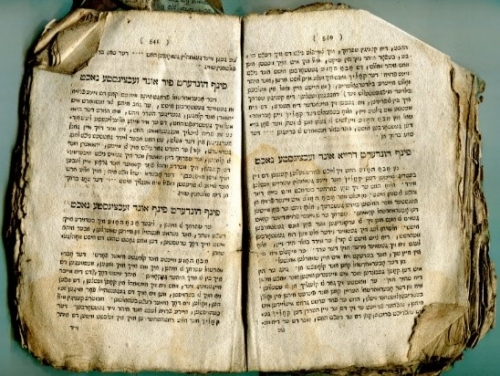
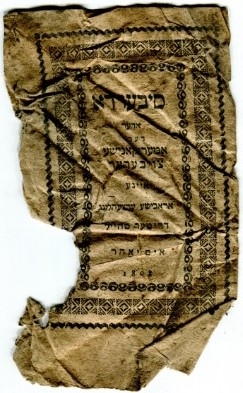
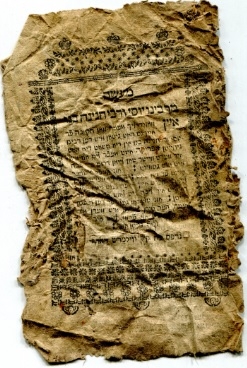
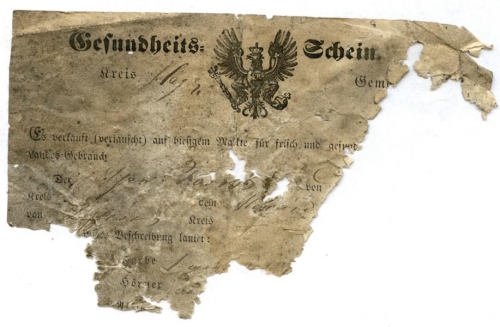
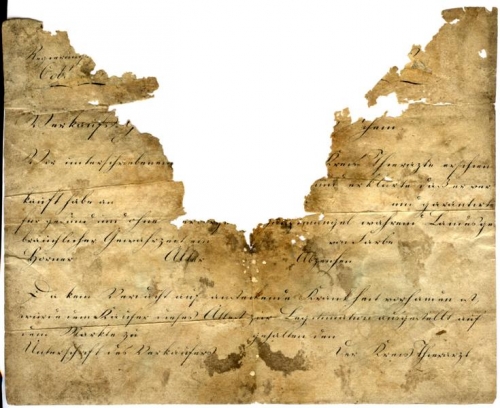
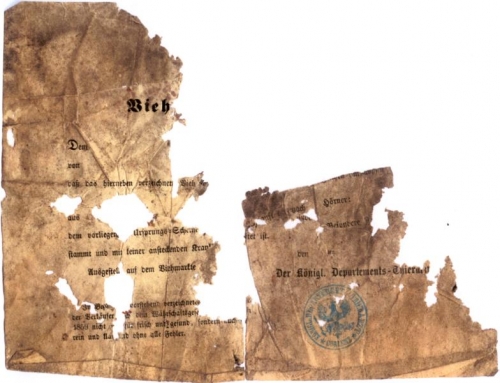
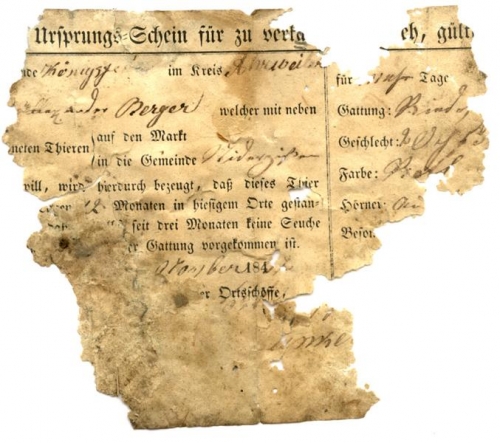
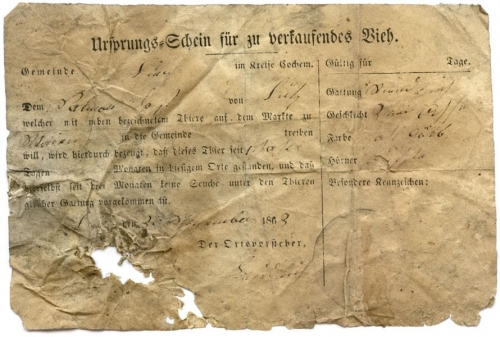
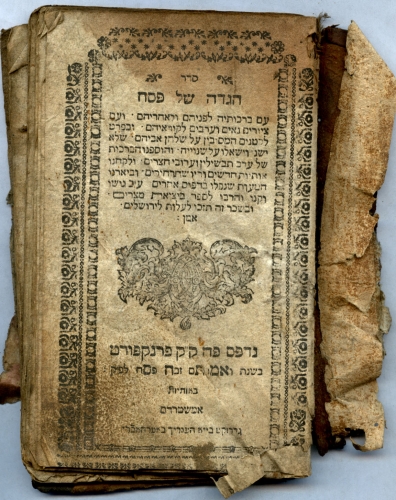
![Haggada, Seder shel Pesaḥ, Fürth: Itziq ben David [Zirndorf] 1780 (Nizi_Hag_9)](https://www.ehem-synagoge-niederzissen.com/wp-content/uploads/2019/05/K800_Hag_9-99999x500.jpg)
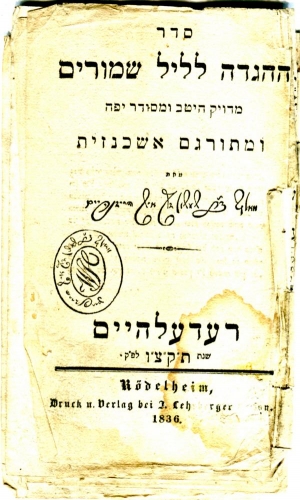
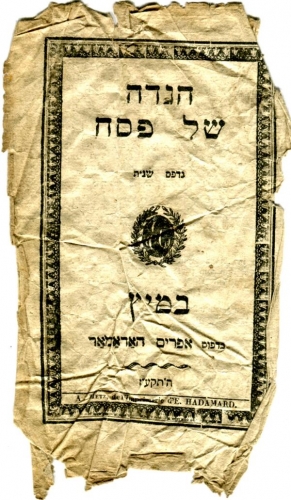
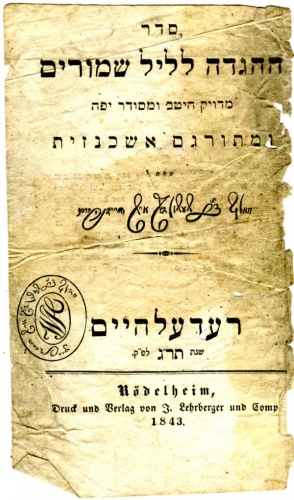
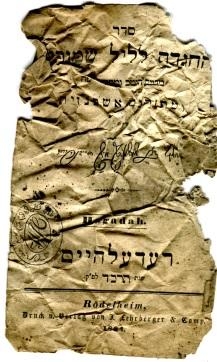
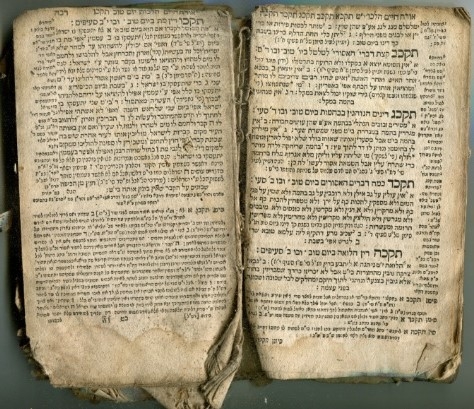
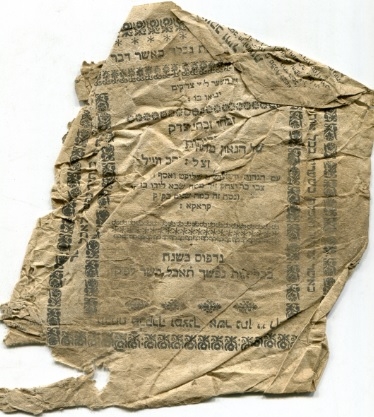
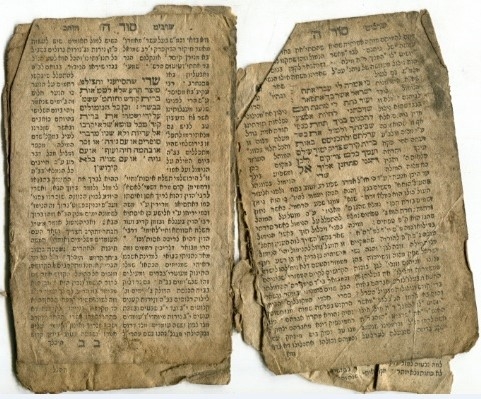
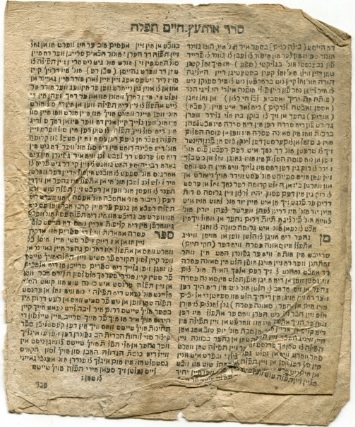
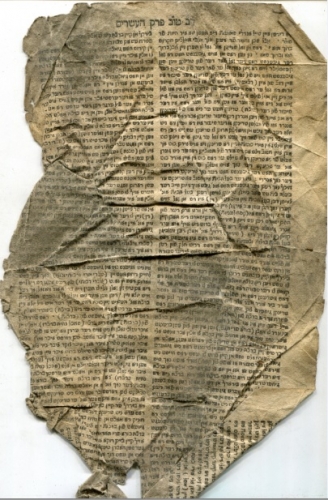
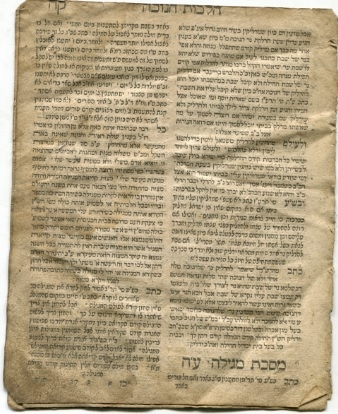
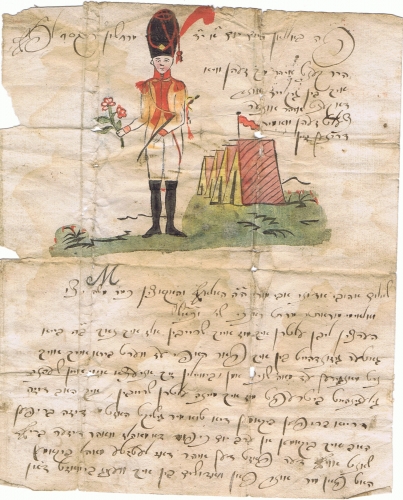
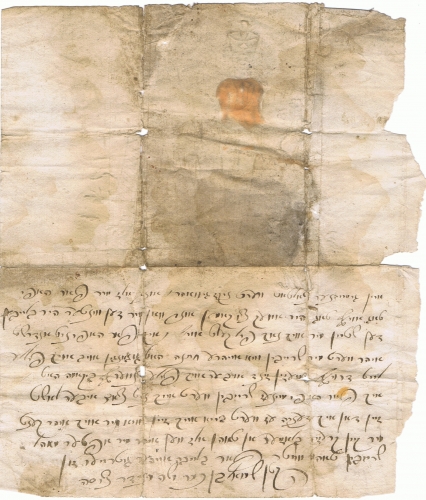
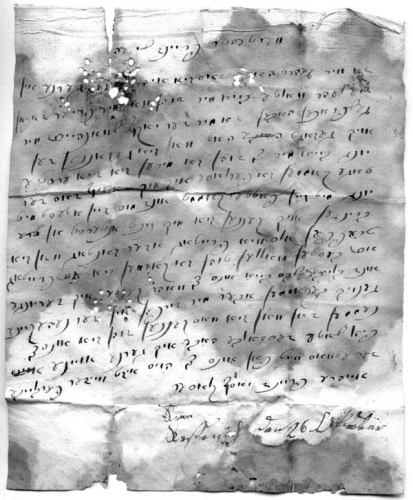
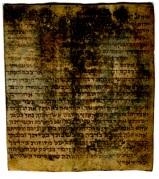
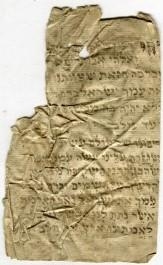
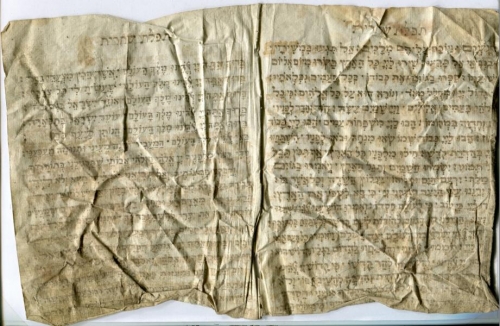
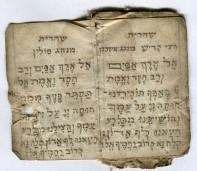
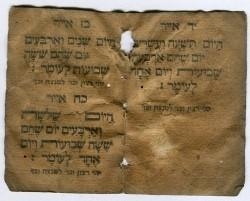
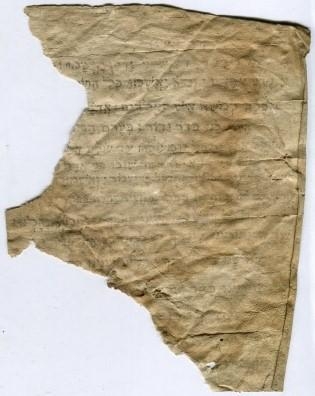
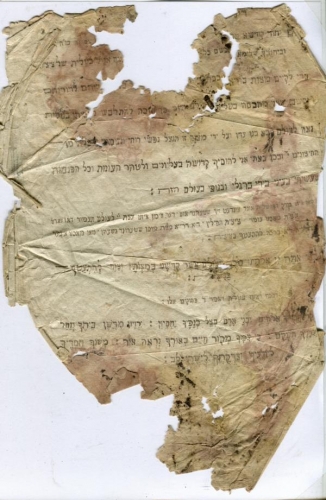
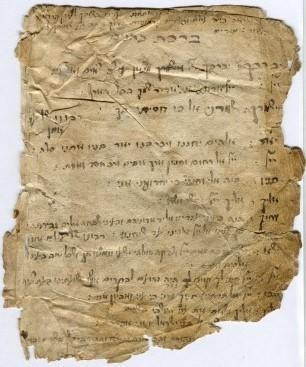
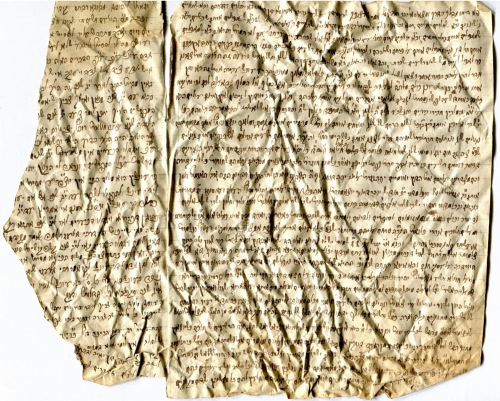
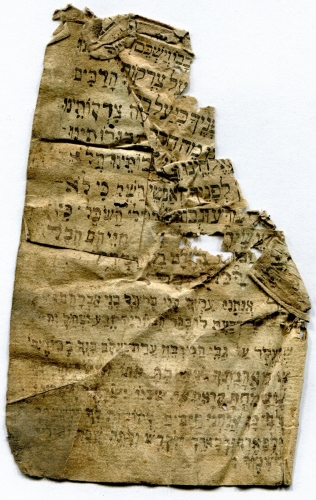
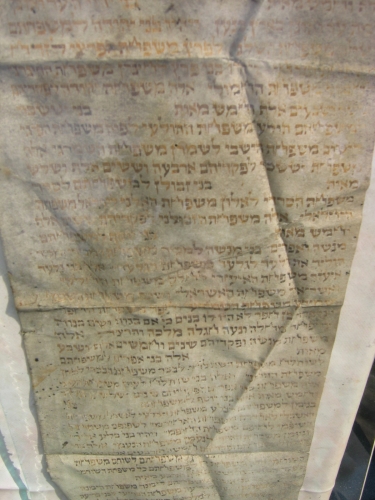
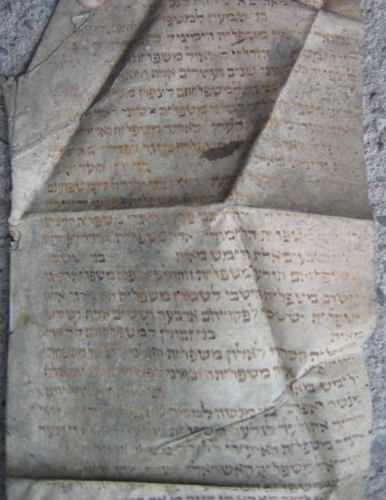
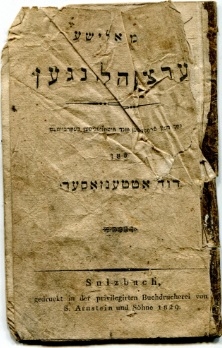
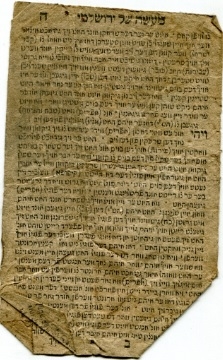
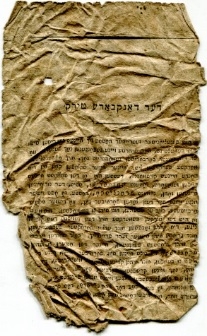
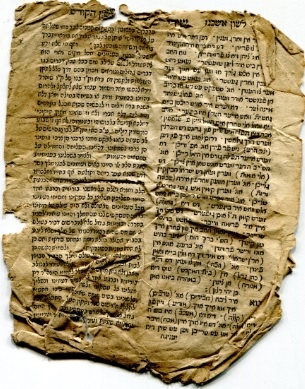
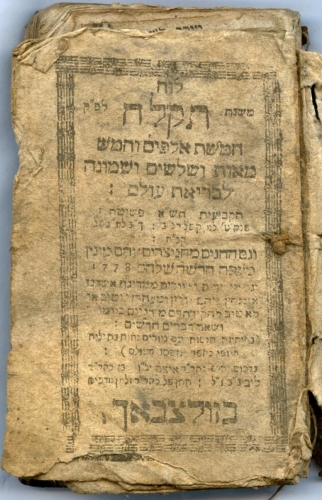
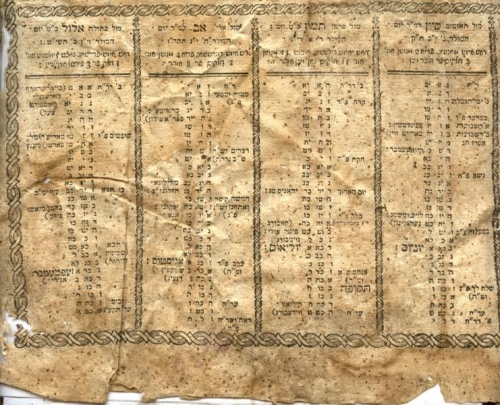
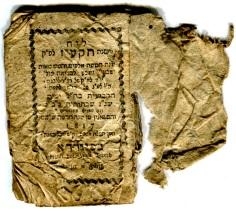
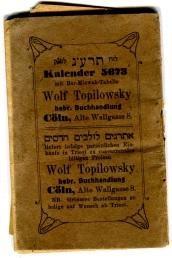
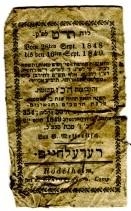
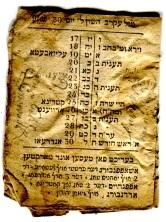
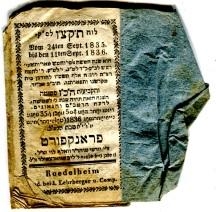
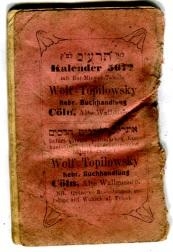
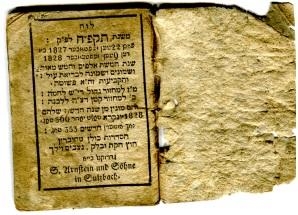
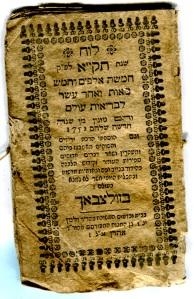
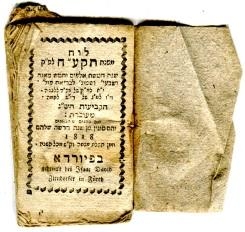
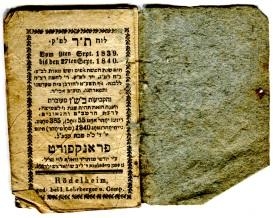
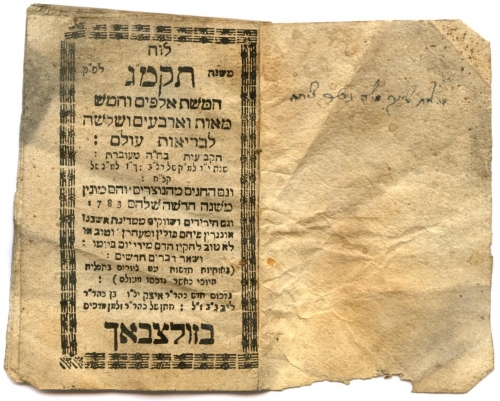
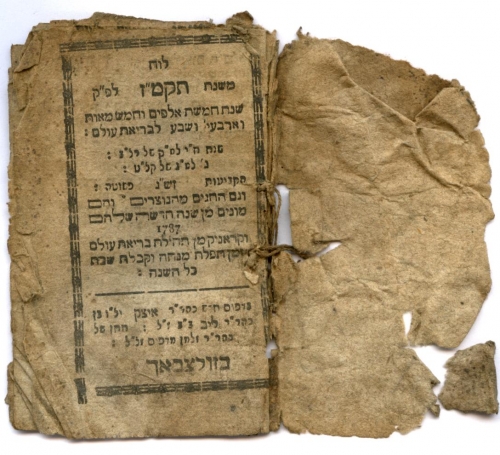
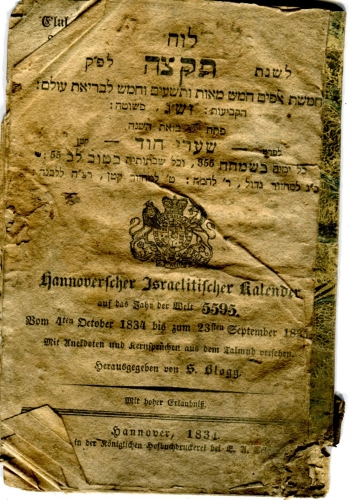
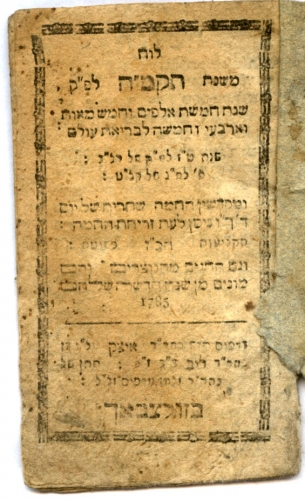
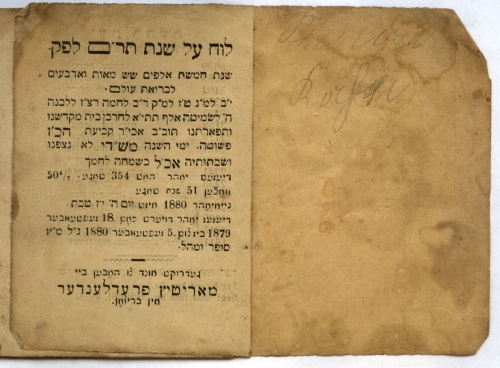
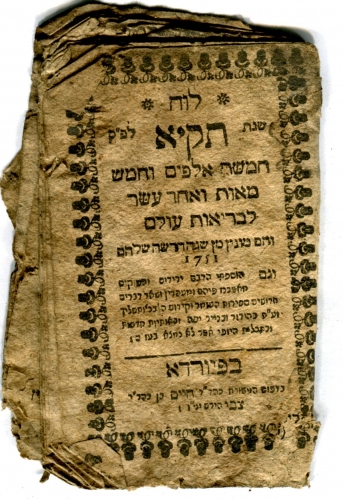
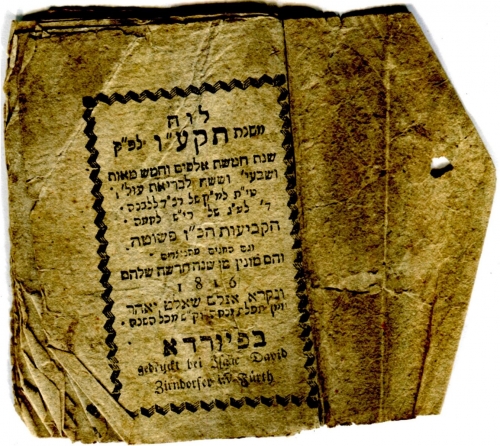
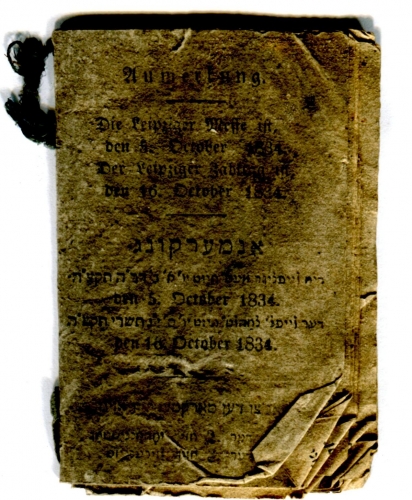
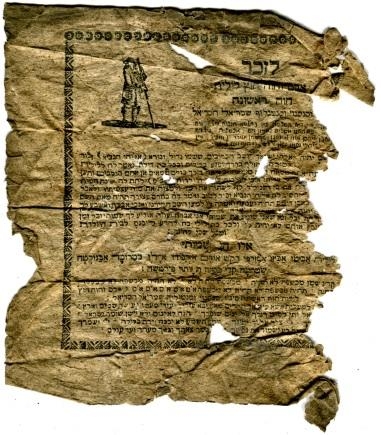
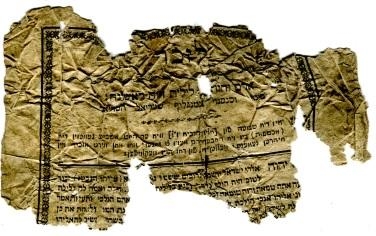
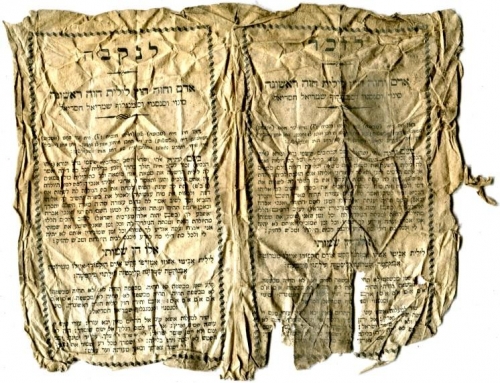
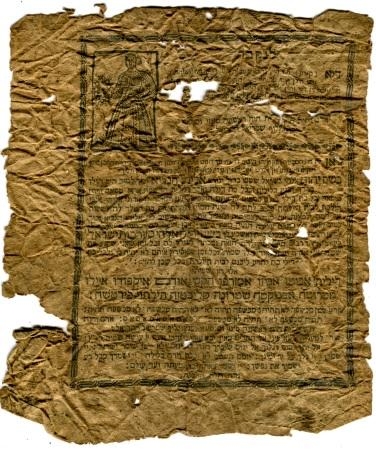
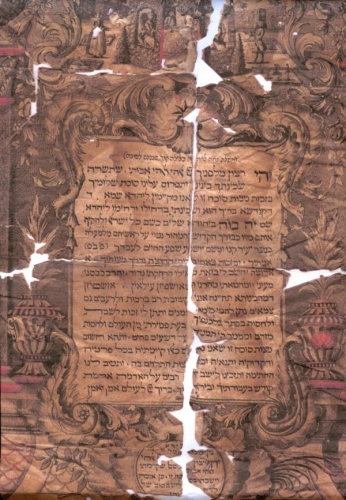
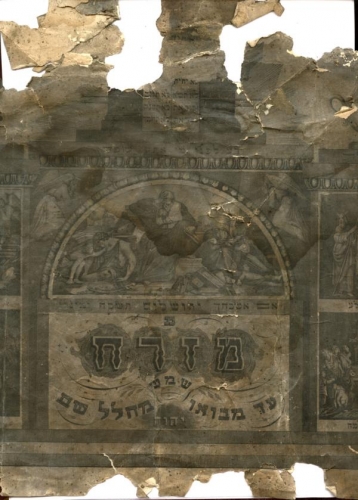
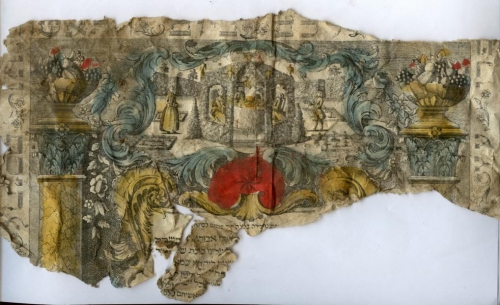
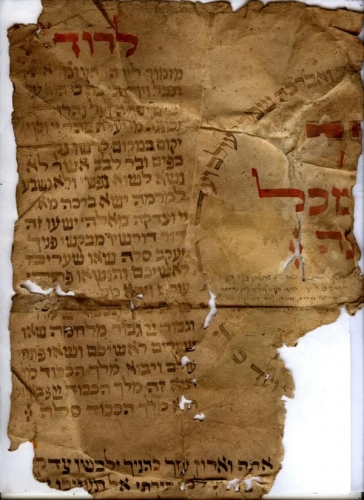
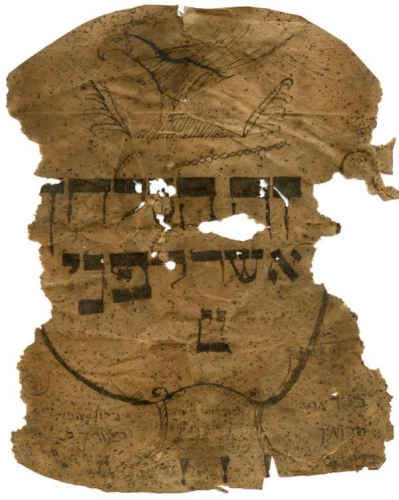
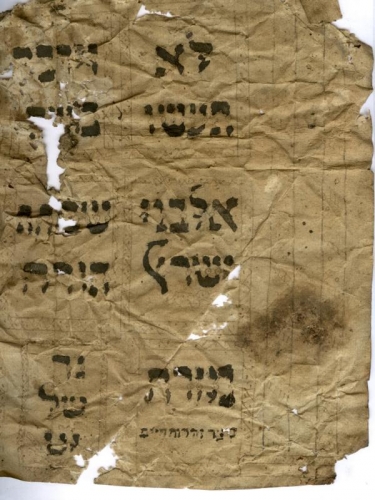
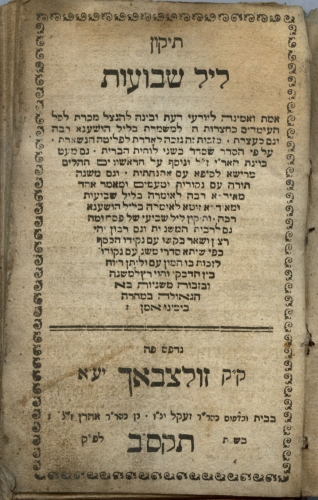
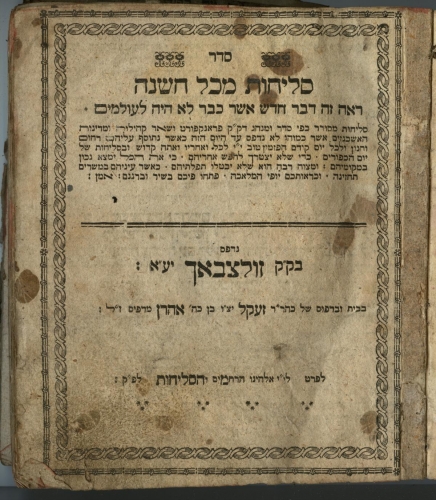
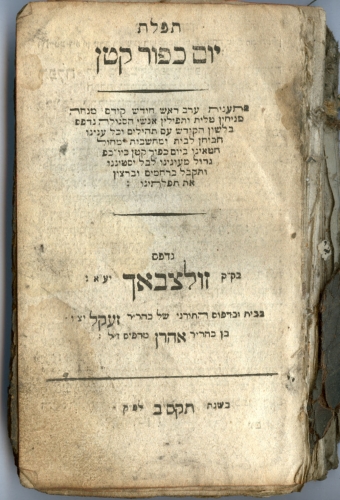
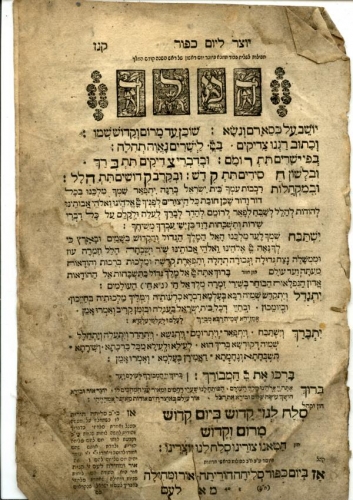
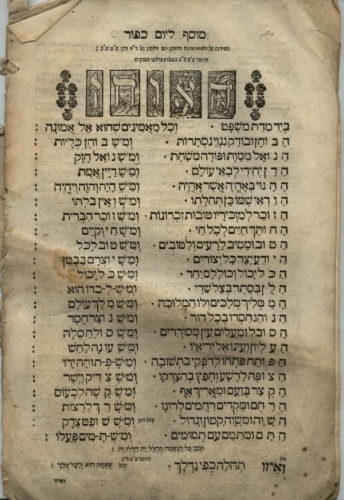
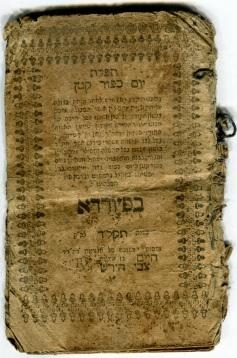
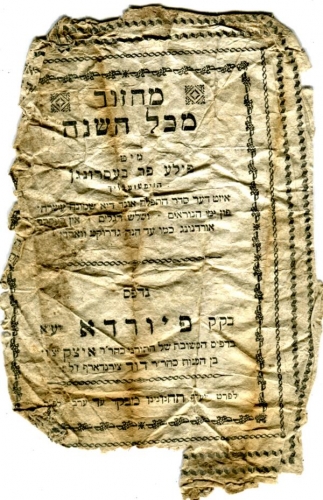
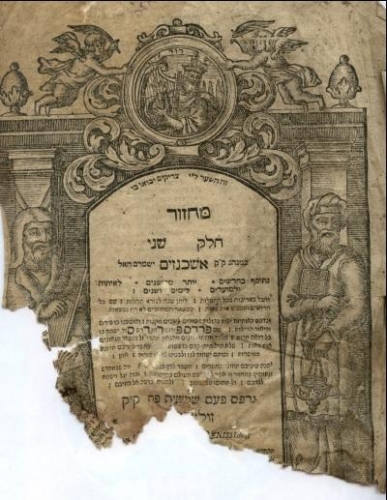
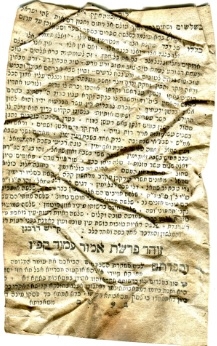
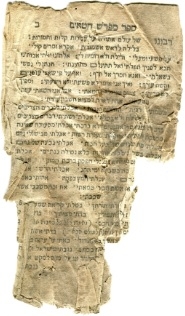
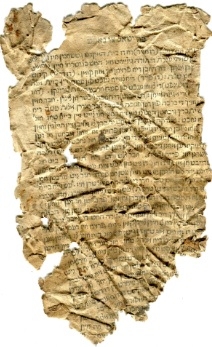
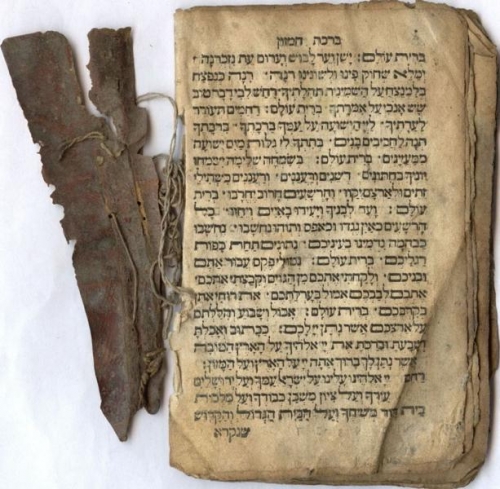
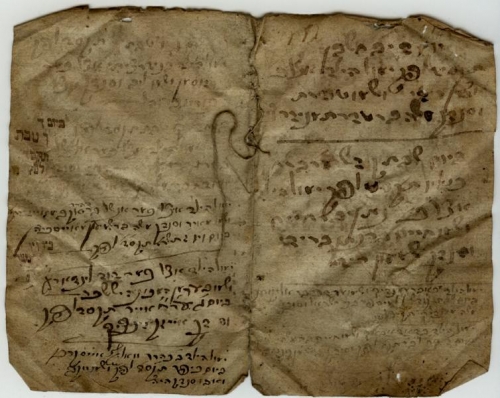
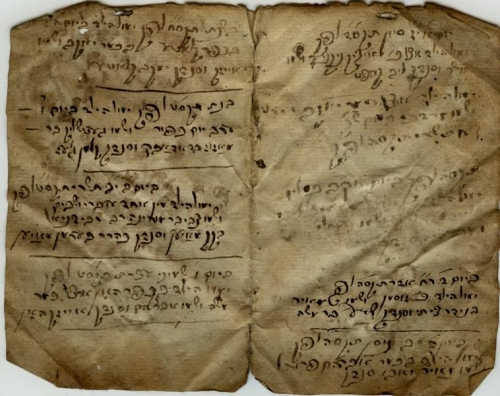
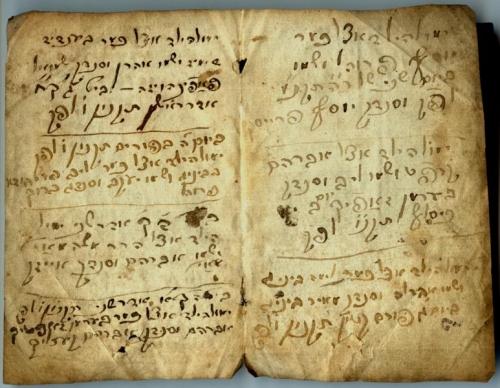
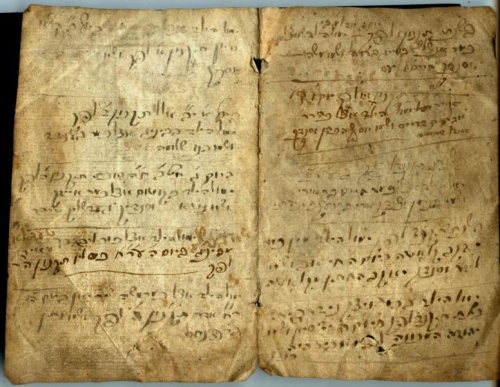
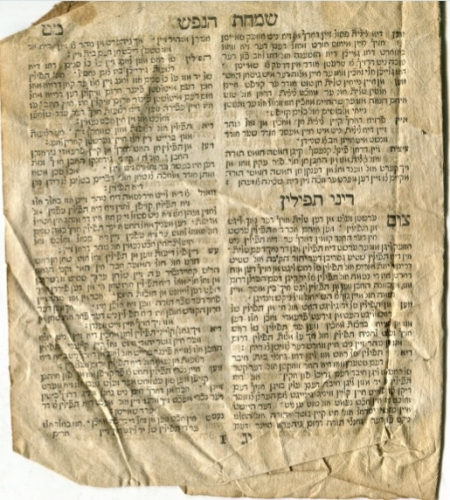
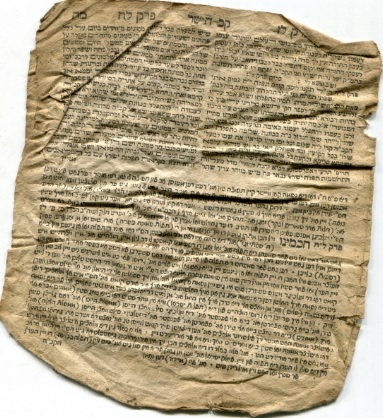
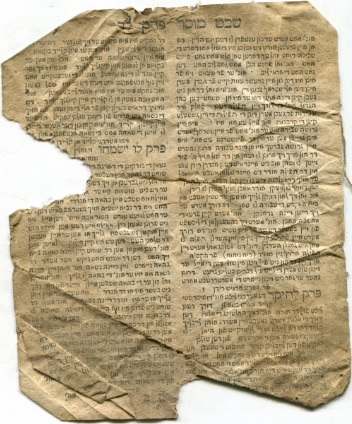
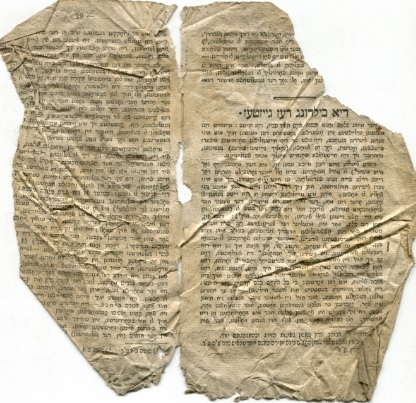
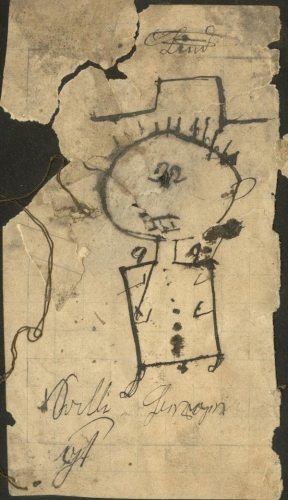
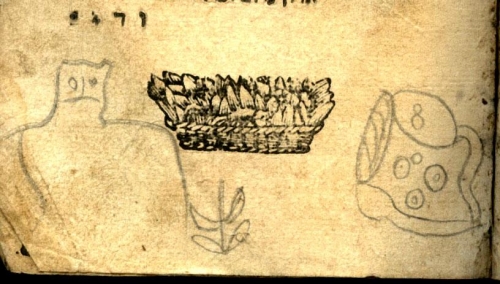
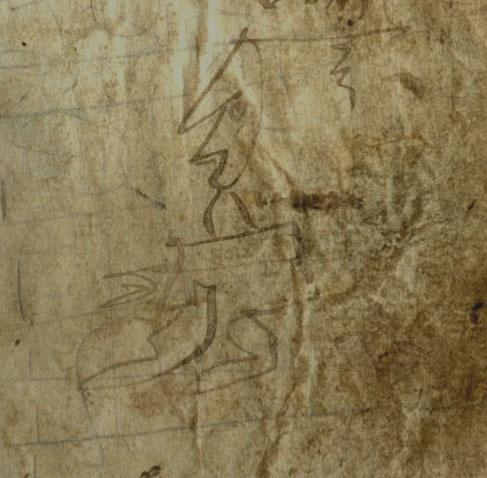
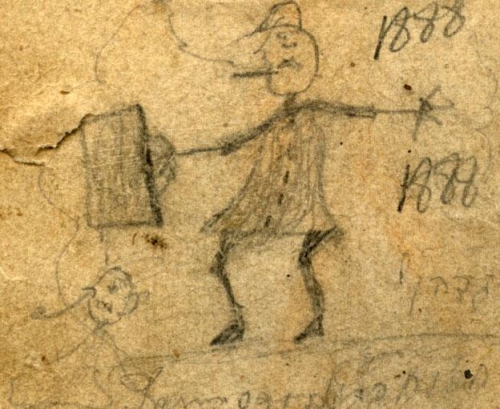
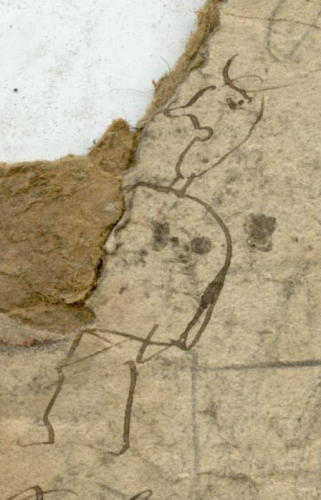
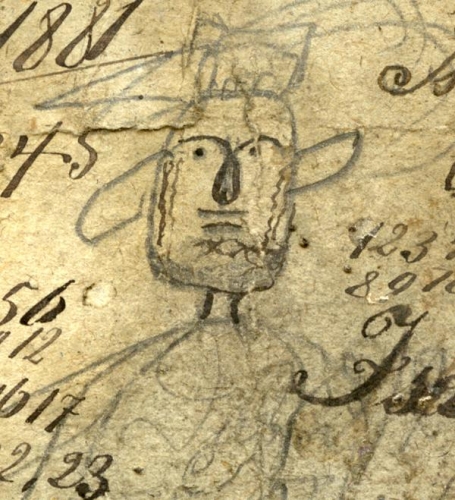
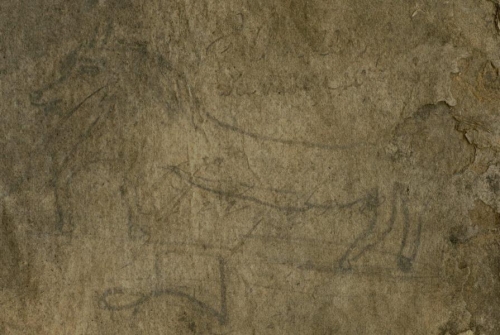
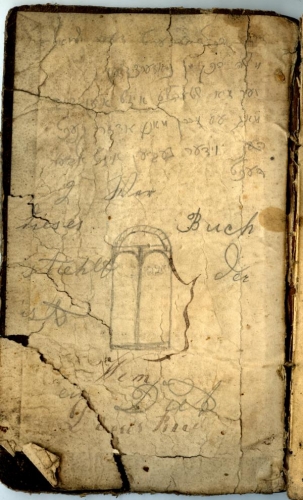
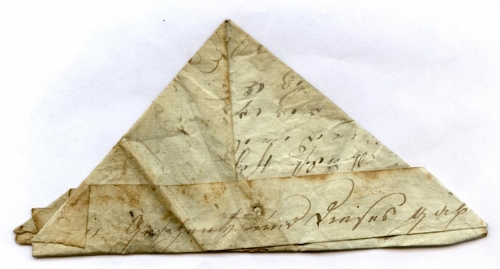
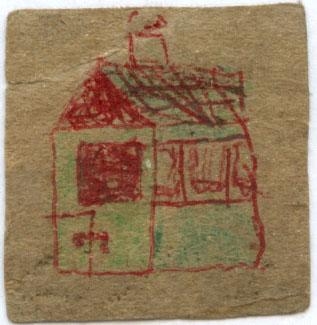
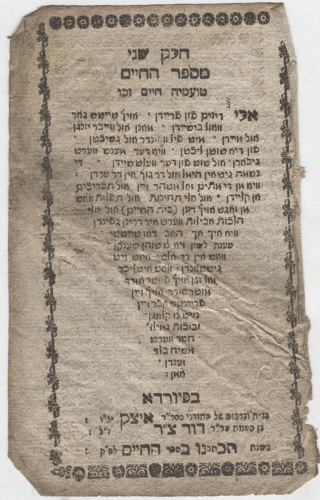
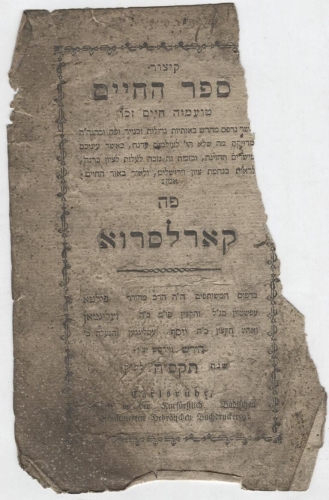
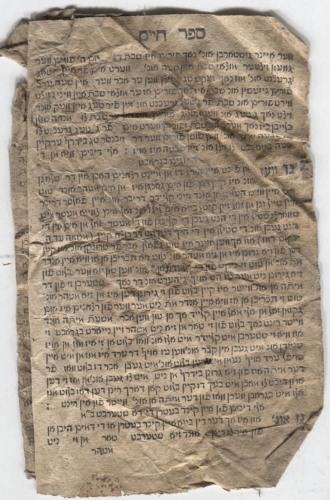
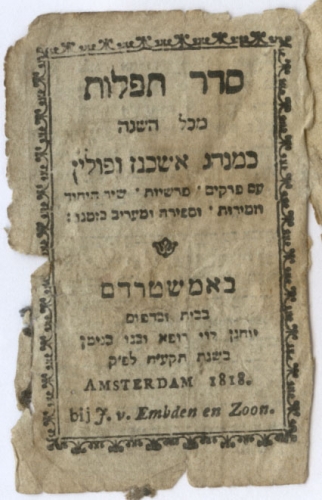
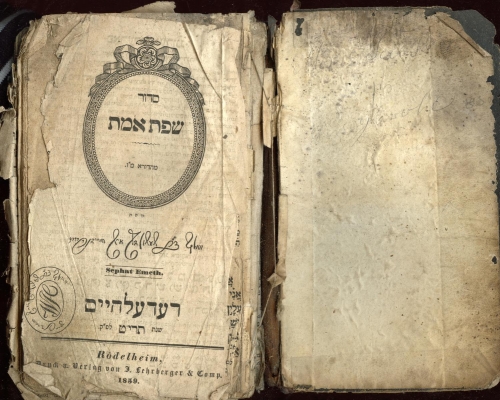
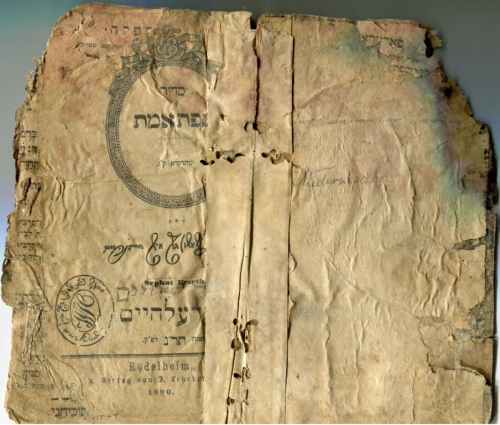
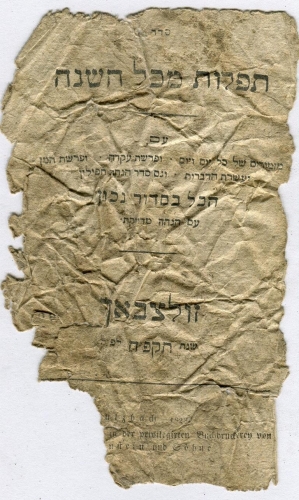
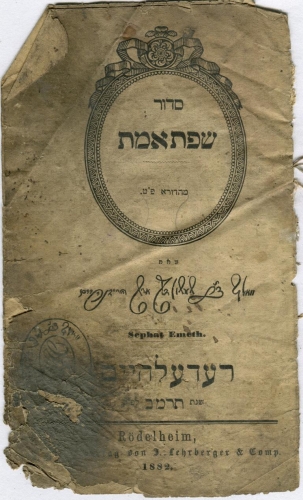
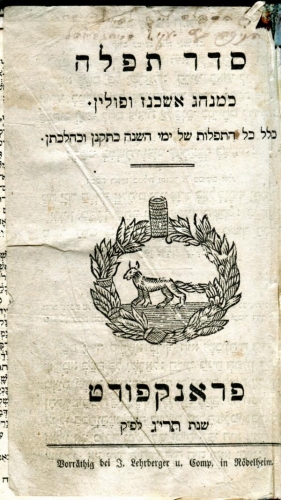
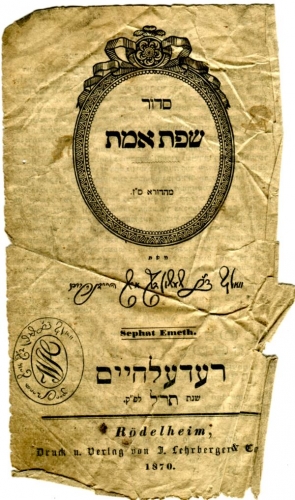
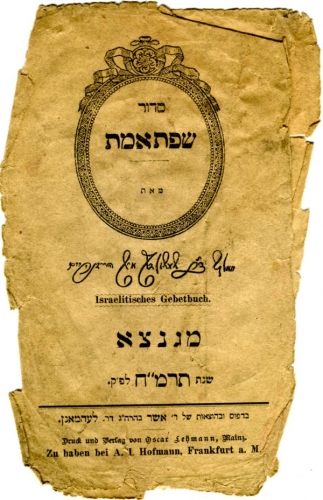
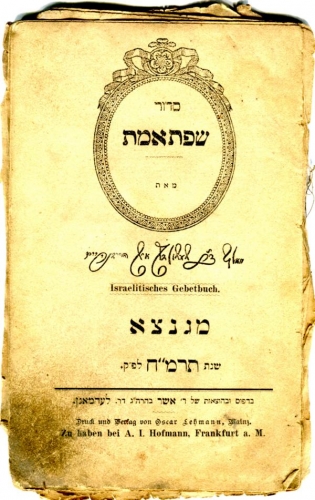
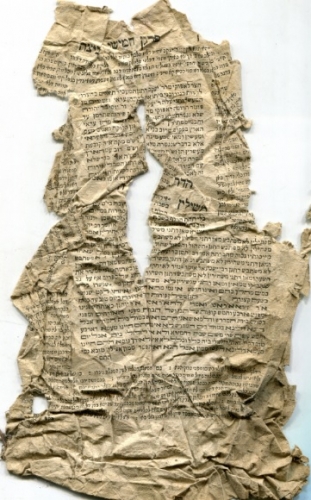
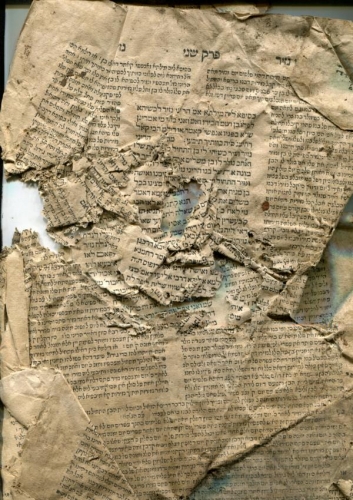
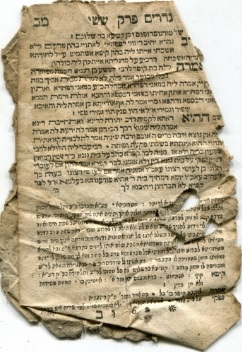
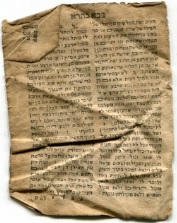
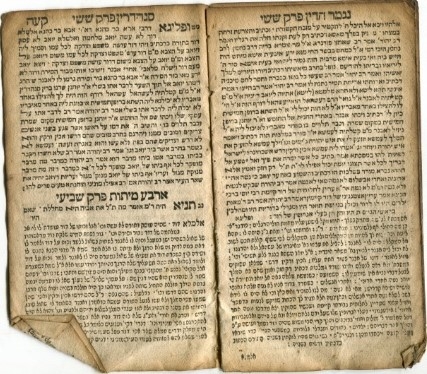
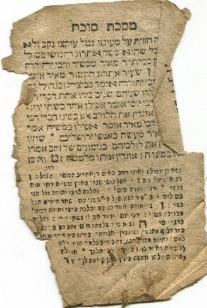
![Teḥinnes. Ayn Gebetbukh fir Gebildete Froienzimmer zum Gebroikh bei der efentlikhen und haislikhen Andakht …[„a prayer book for learned women for use during public and private prayer service“] edited by Yehoshua Hirshel Miro, Rödelheim: J. Lehrberger & Co. 1859 (Nizi_Tehinnot_42)](https://www.ehem-synagoge-niederzissen.com/wp-content/uploads/2019/05/K800_Tehinnot_42-99999x500.jpg)
